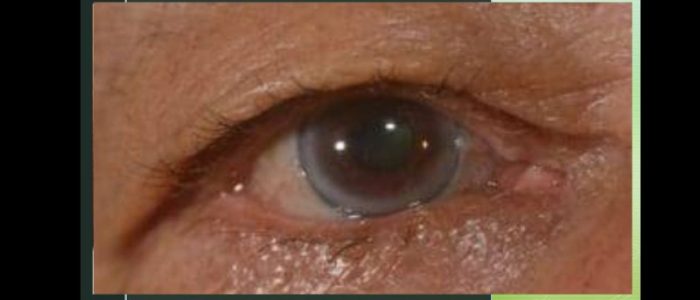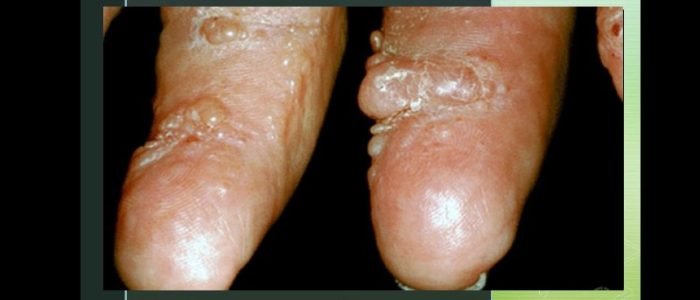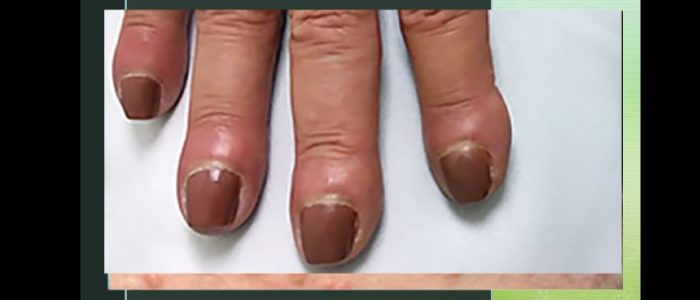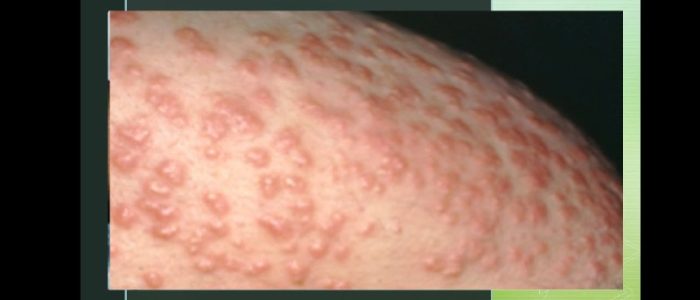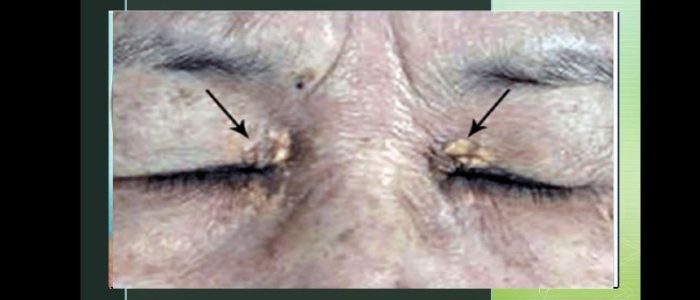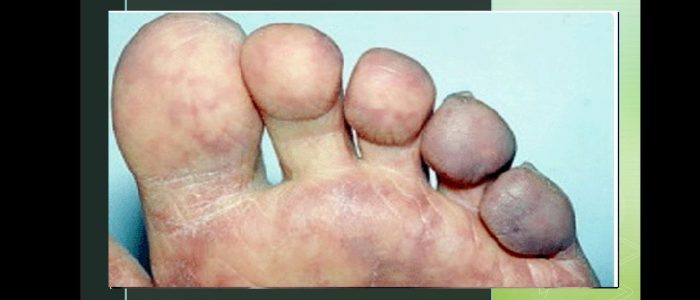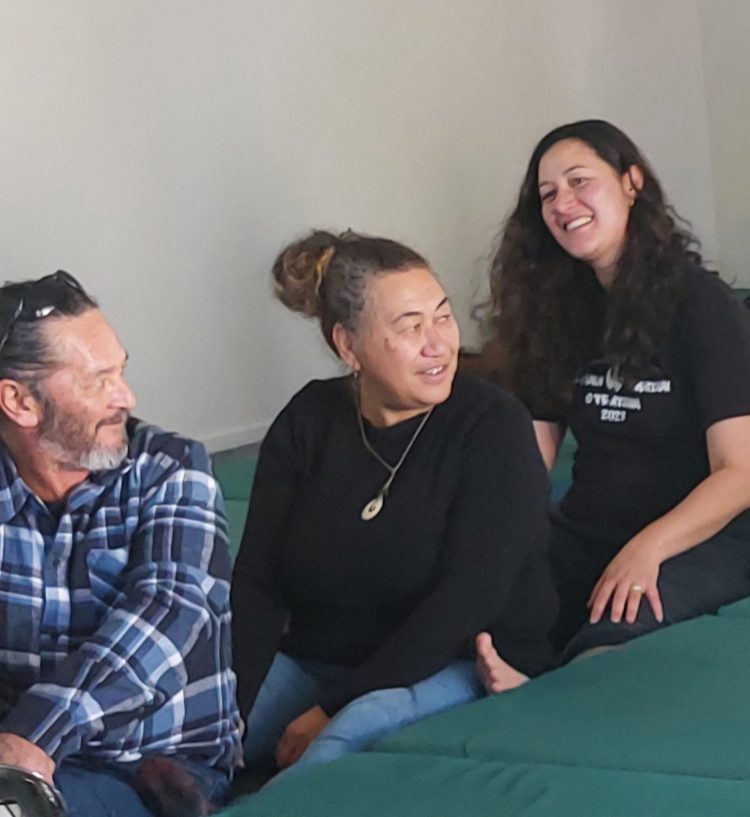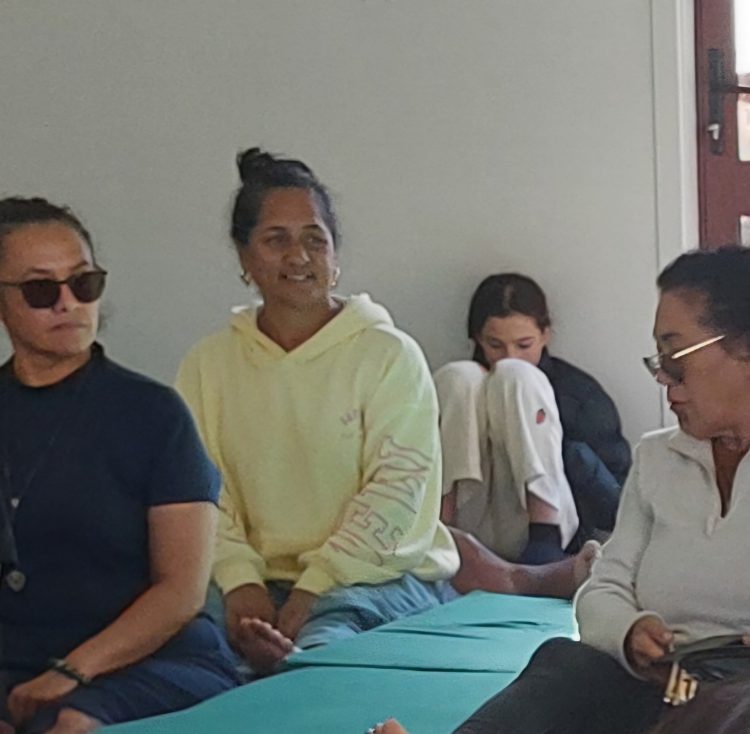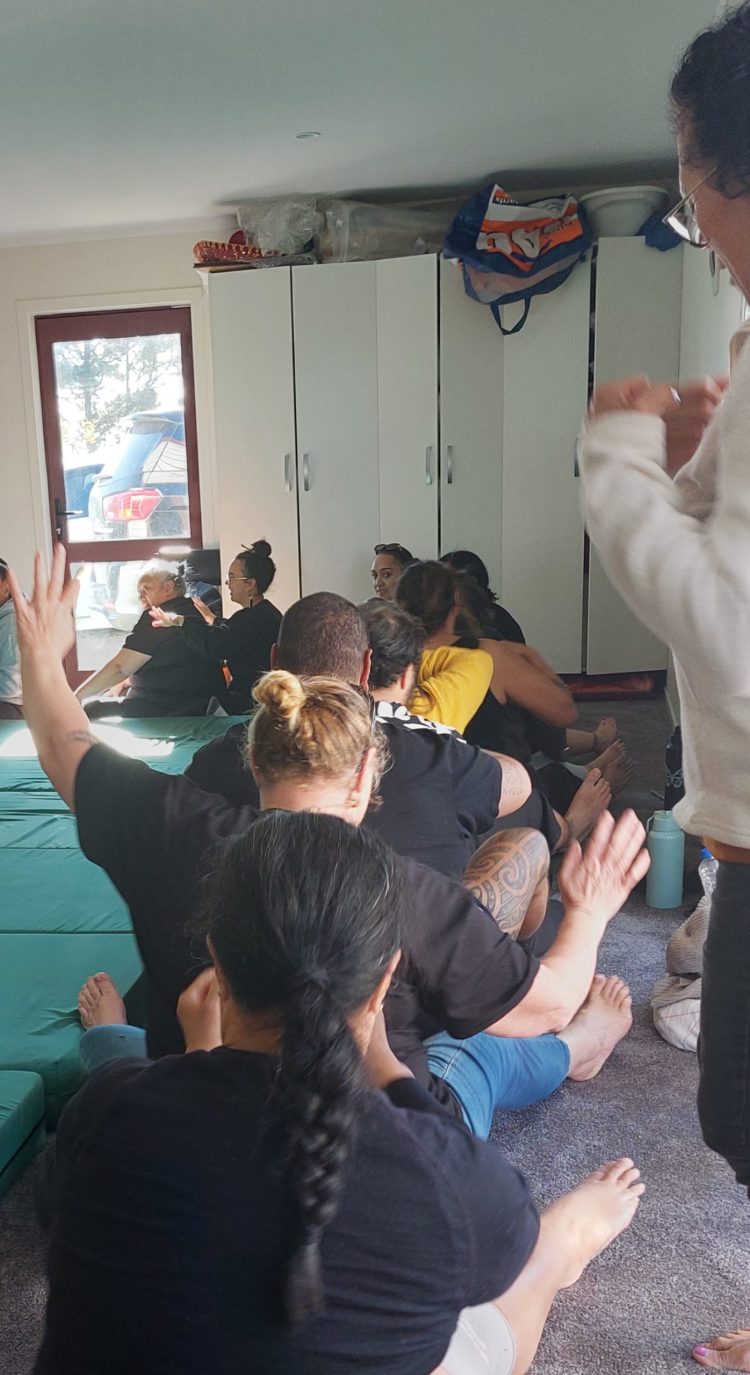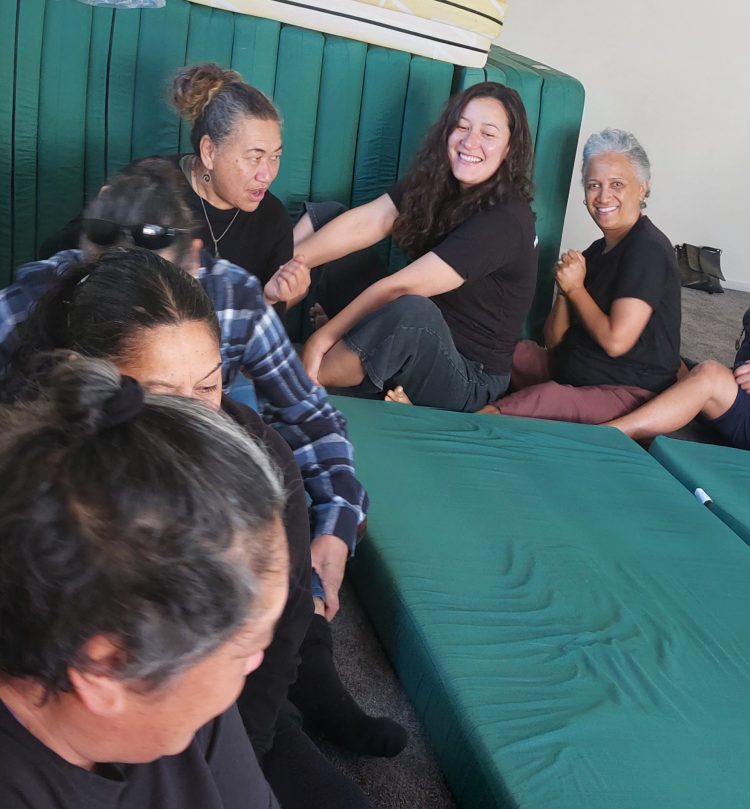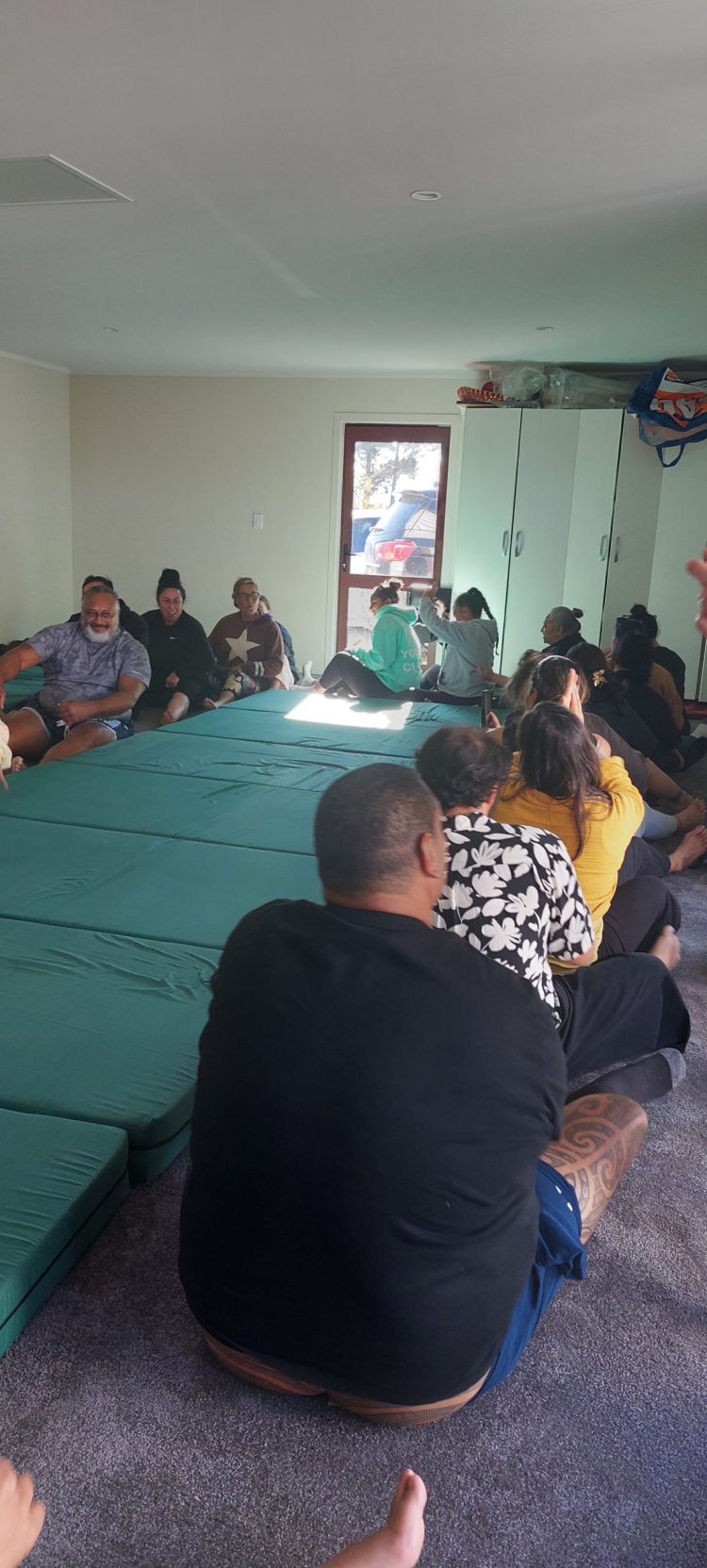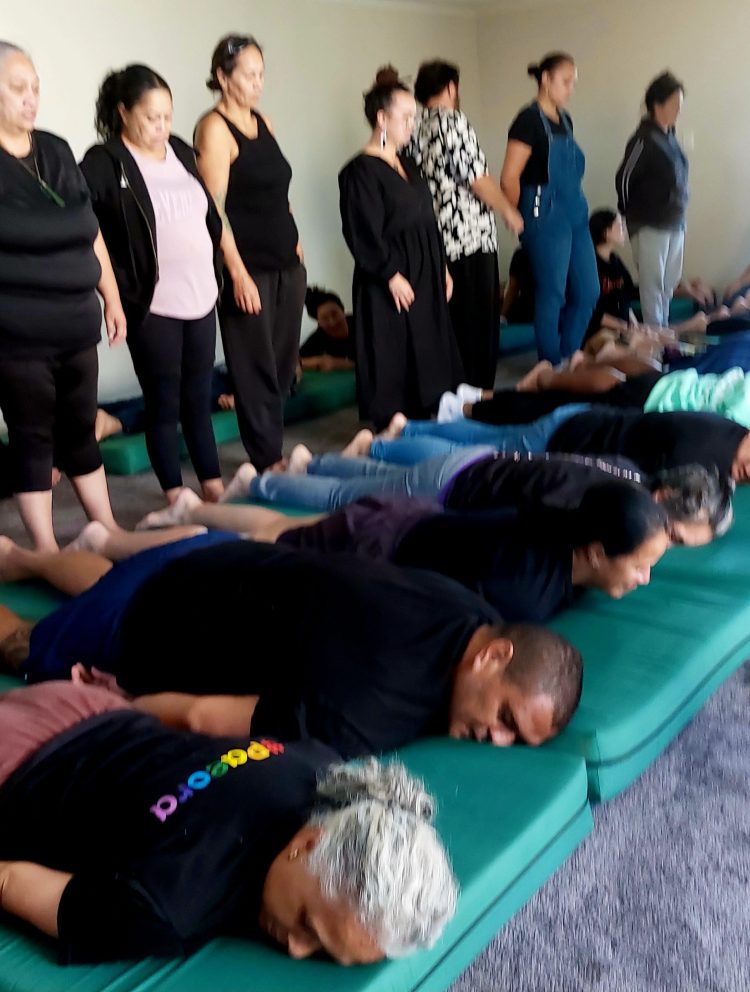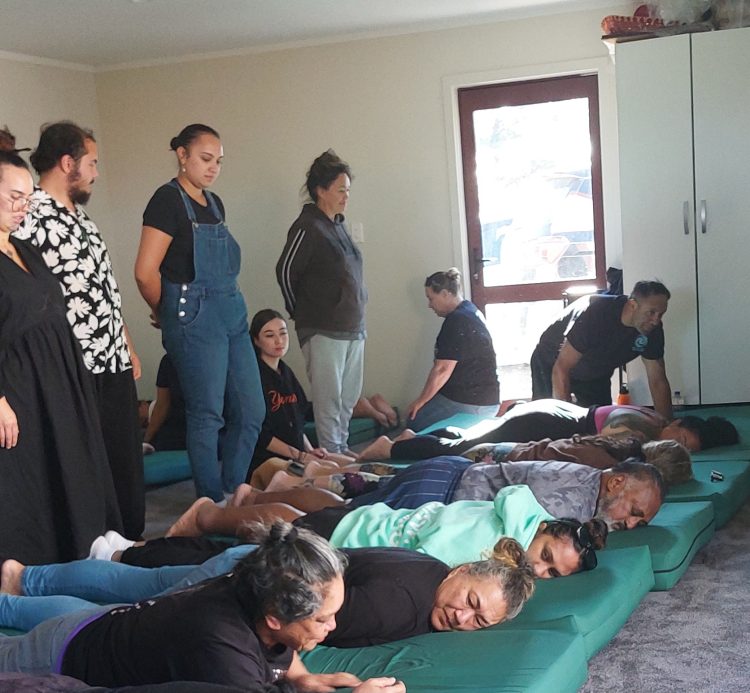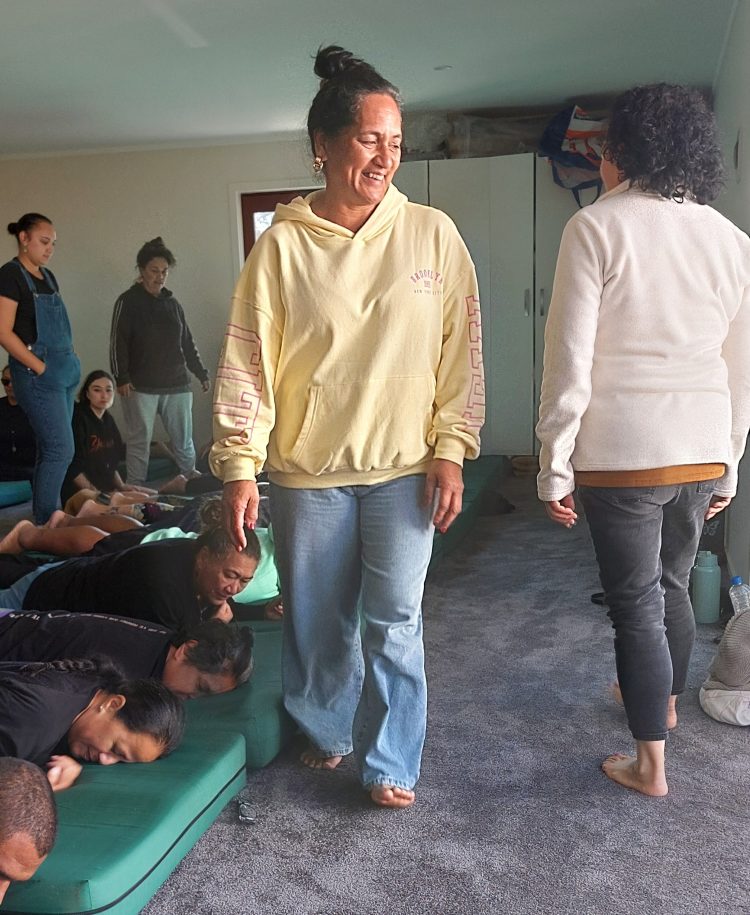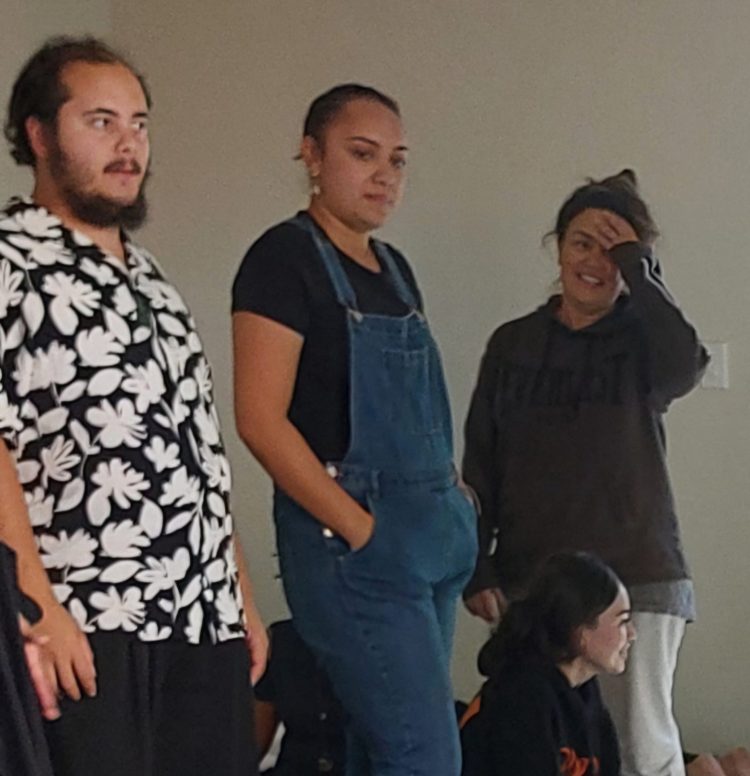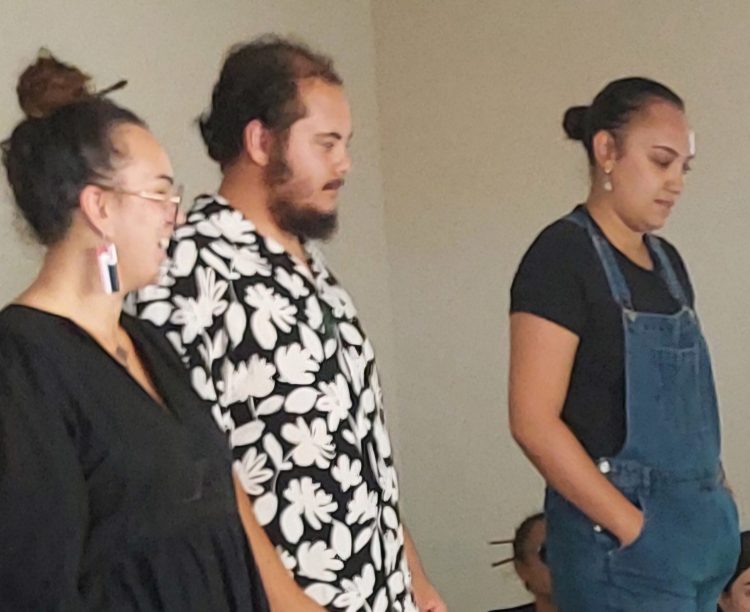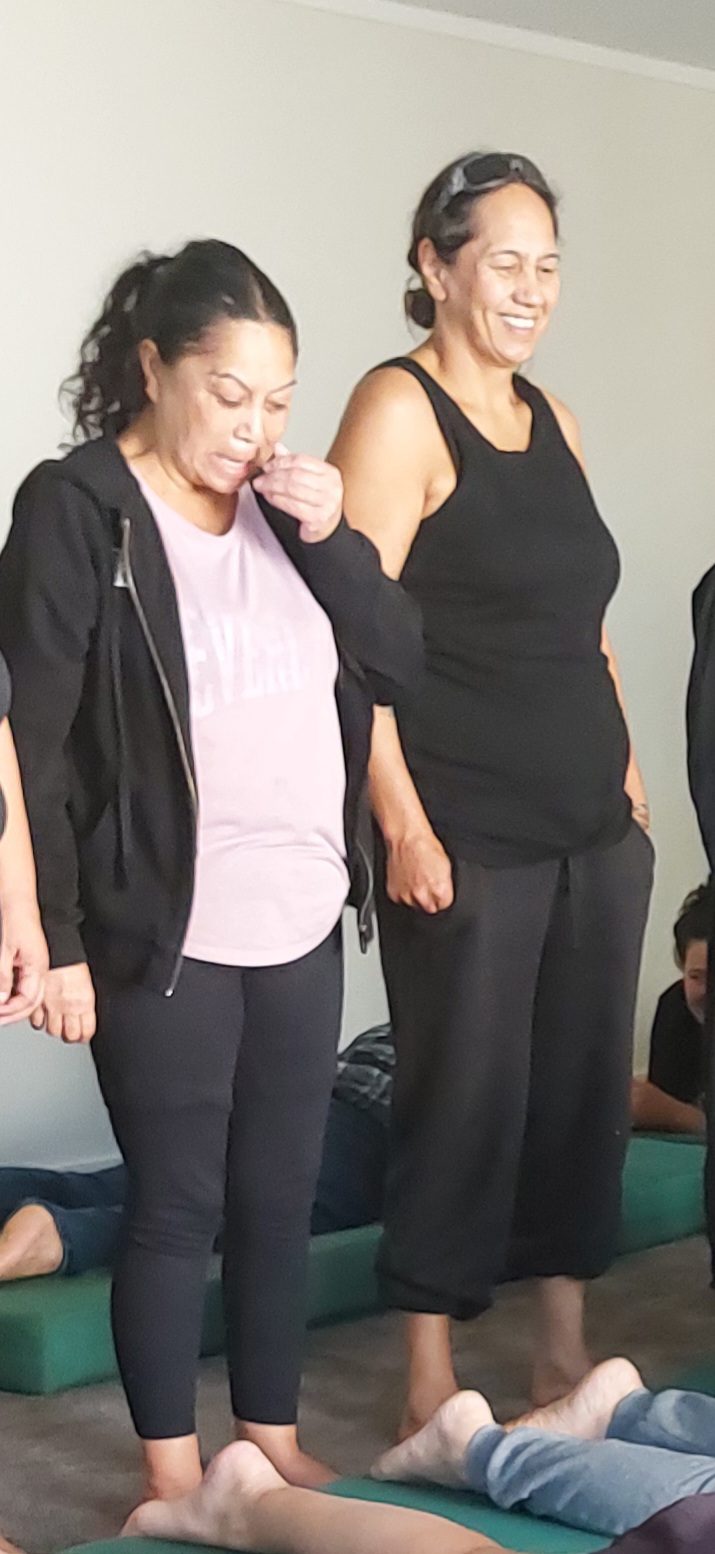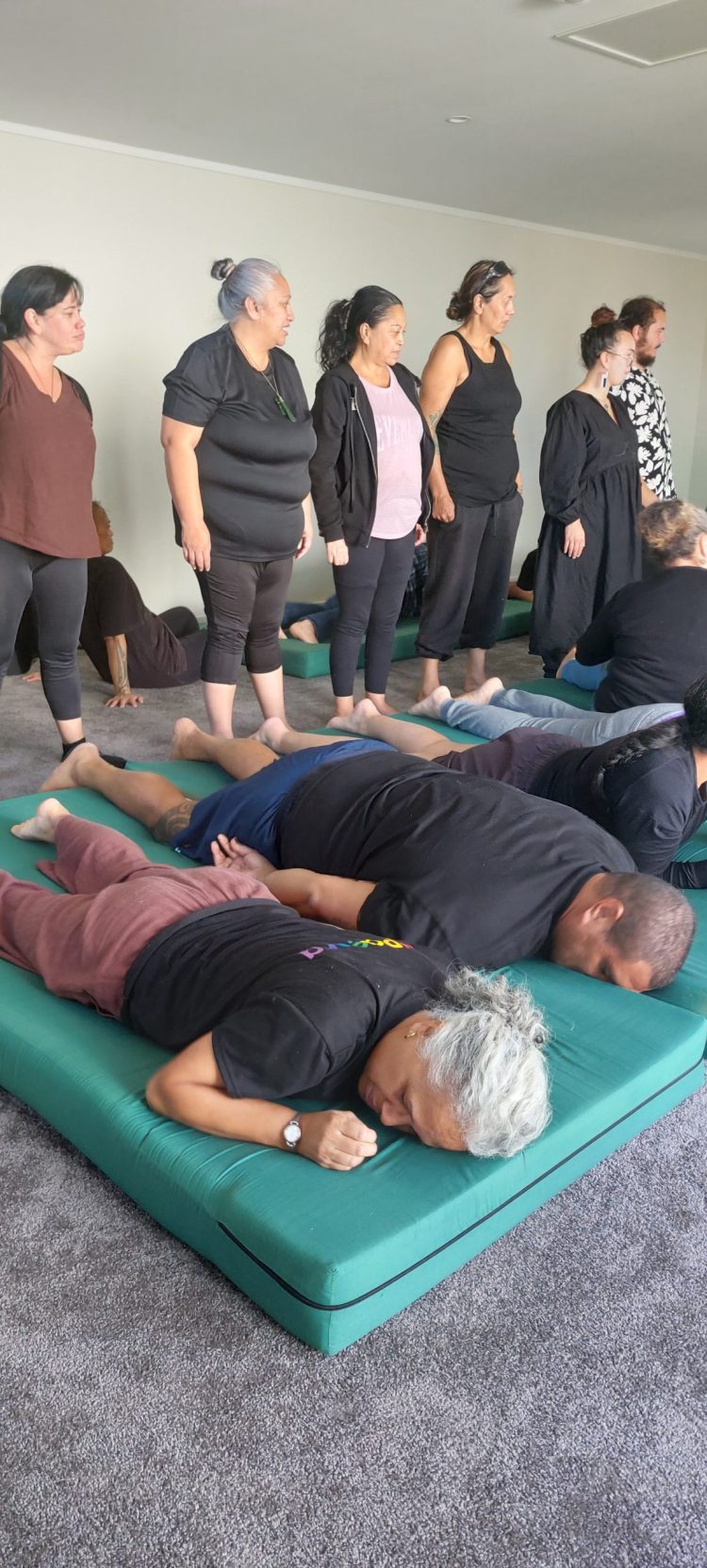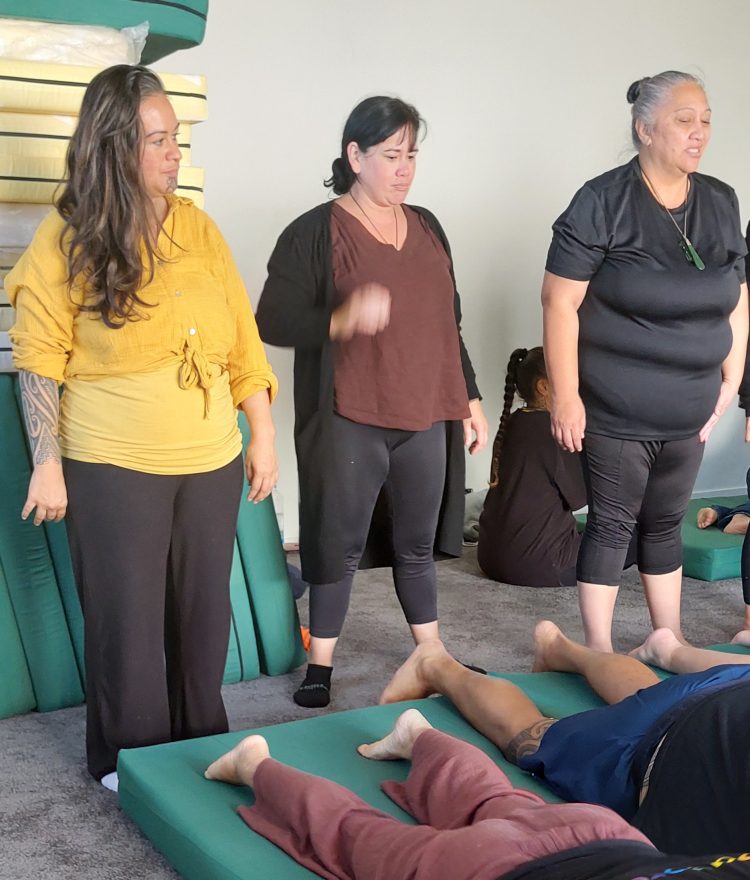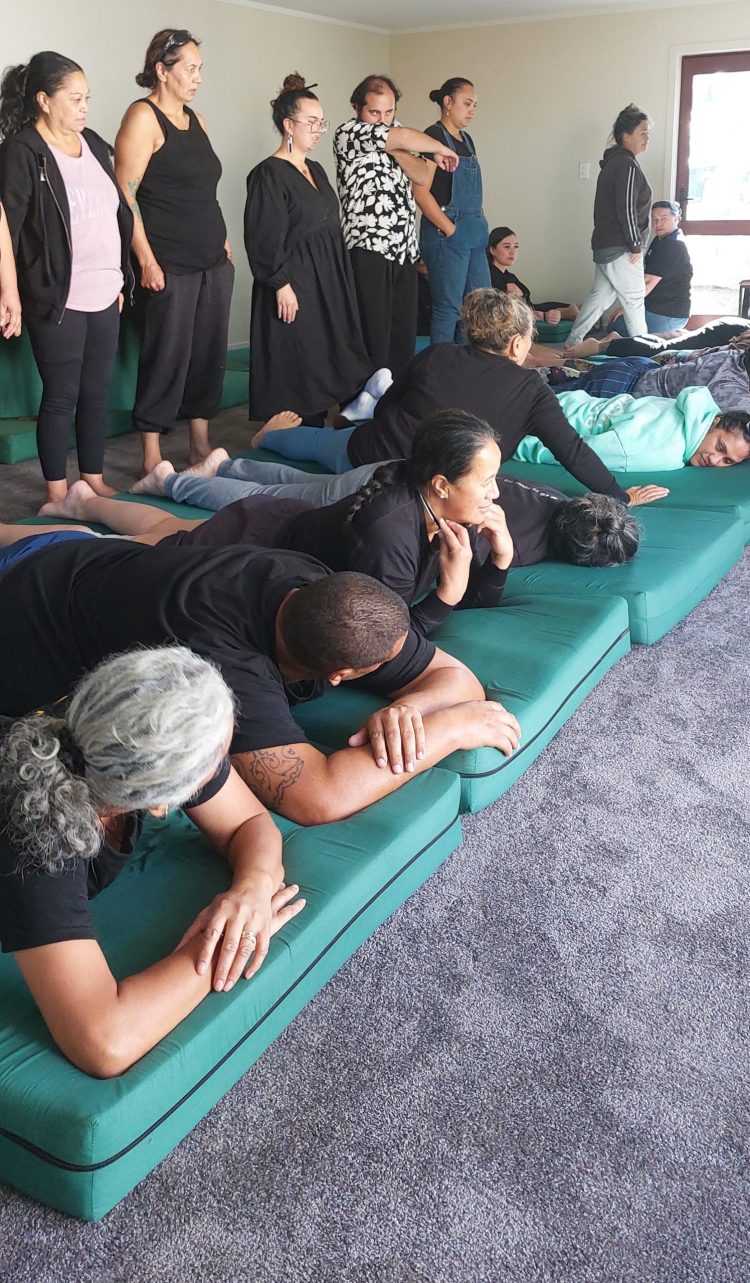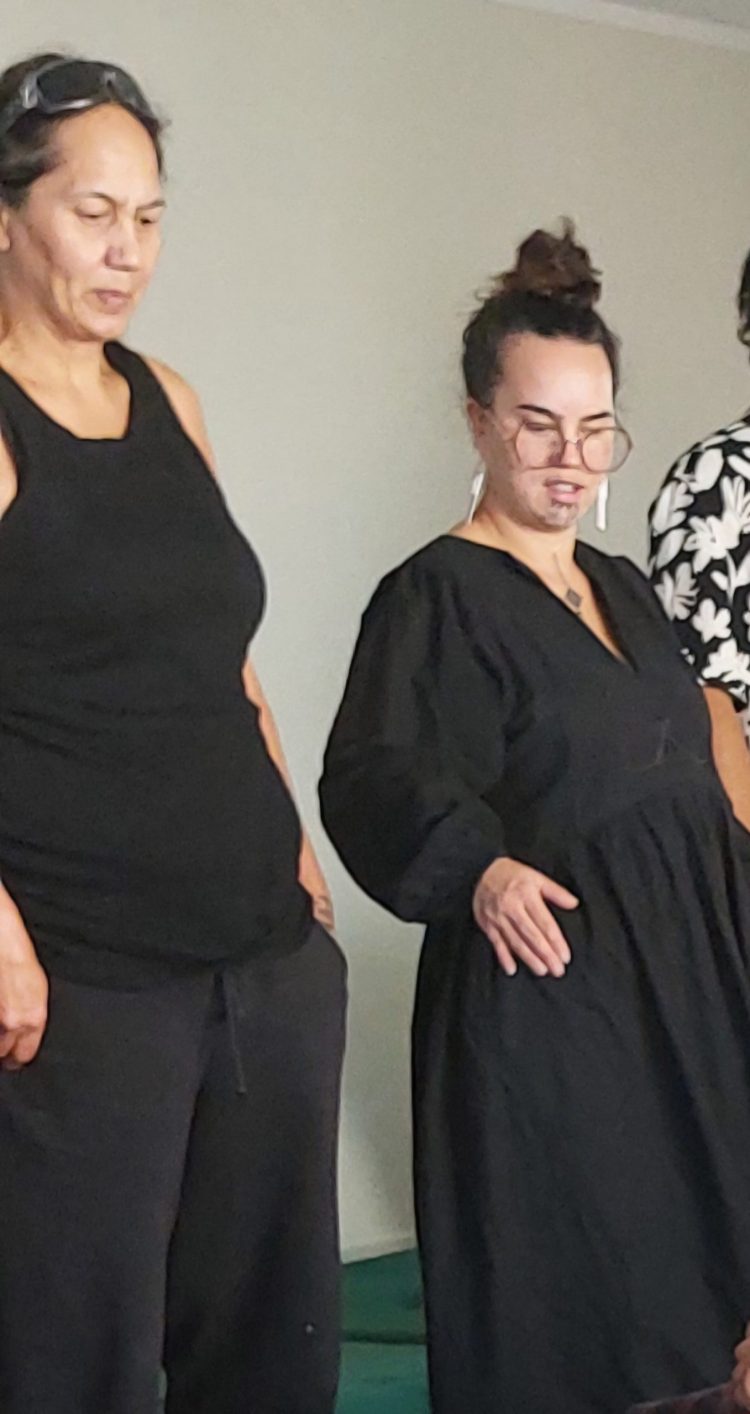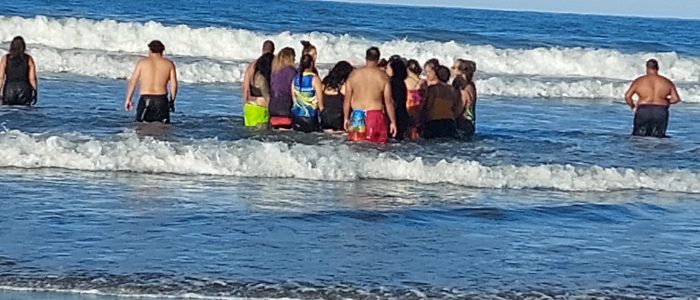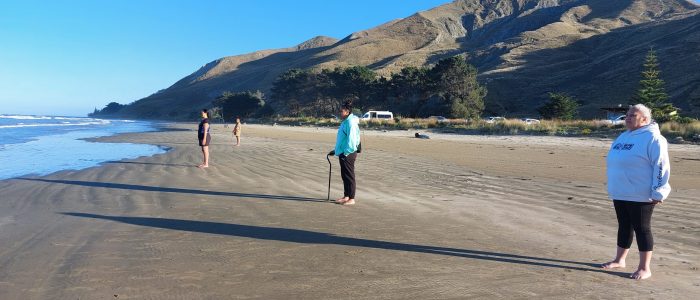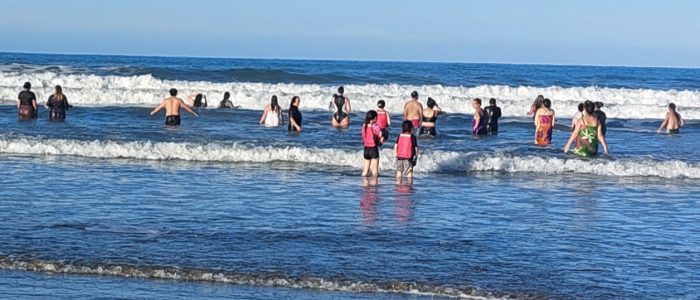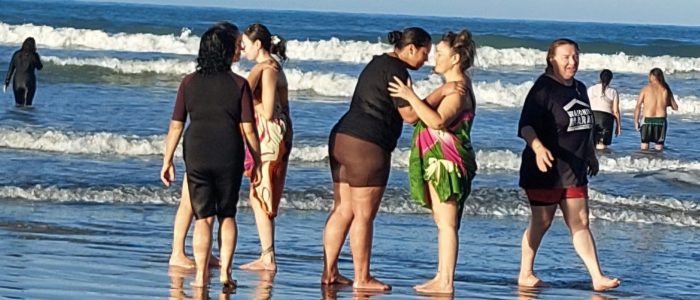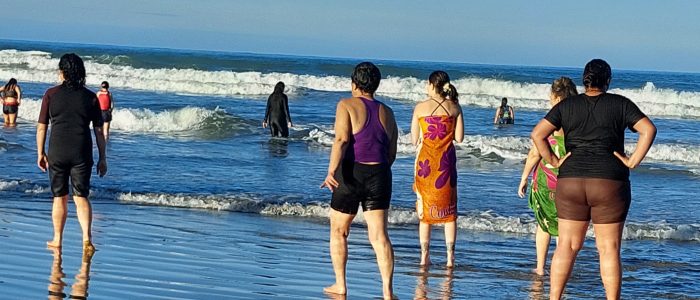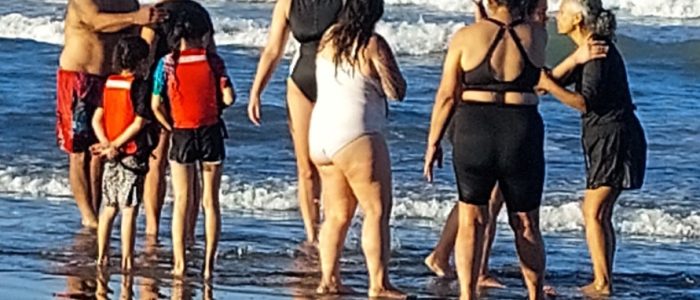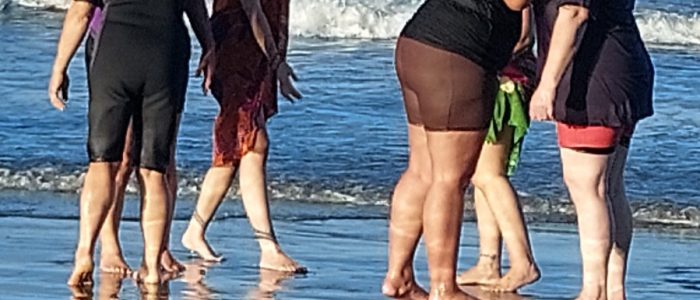
Mataweka Marae

Ko Ruahine te maunga
Ko Tukituki, ko Waipawa nga awa
Ko Ngāi Te Whātuiāpiti, ko Ngāi
Toroiwaho,
Ko Ngāi Te Hauapu ngā hapū
Ko Nohomaiterangi te whare tipuna
Ko Mataweka te marae
The wānanga was originally planned to take place at the Waiohiki marae, the trustees sent out a notice the day before, informing us that there might be a tangi there over the weekend. Te chairperson of the Mataweka marae agreed to host us immediately, despite having a composting wānanga scheduled for that Friday. As a result, we changed our plans to prepare for the move to Central Hawkes Bay.
The Te Oomai Reia romiromi wānanga had previously visited this marae in 2023, so we were already familiar with the layout of the land and the nearby beach for purepure.
The Mataweka marae is located on Tapairu Road, south of Waipawa, and is primarily associated with the hapū Ngāti Toroiwaho and Ngāti Whatuiāpiti of Ngāti Kahungunu descent. Although the wharenui is quite small, it is very old, and the mauri of the ancestors is strongly felt within its walls. During our last wānanga, the whānau found the atmosphere somewhat eerie, which provided a meaningful opportunity to learn about whakawātea, the process of clearing unwanted energies from a space.
Feedback of the powhiri roles
Managing the powhiri

Ngā mihi to Odessa our wahine toa rangatira o te paepae (Fierce warrior princess) It takes a lot of courage to stand in front of that many people and speak in formality.
The powhiri was awesome both side’s did a great job!! It would be interesting to know what the males were thinking when they saw all females on the pae.
It went really smooth we all connected really well and was easy to manage before we went on. Our speaker was awesome.
Learnings begun as soon as we arrived. Loved that. A very beautiful powhiri by all.
Due to last minute venue change, powhiri couldn’t have been done any better. Nga Mihi to our kaikaranga, Wāhinepae and to us all to form as a group and carry out the powhiri, well done Dessa you stood tall and proud, thanks for our manuhiri for busting out our waiata, and a great start for me to get thrown into the deep end and Whaikorero for us all.
Powhiri was awsome. Nga mihi to Wiremu for speaking for the manuhiri. Nga mihi to Odessa for welcoming us , you shone and you should be so proud.
I loved the Powhiri, I still just follow lol I was actively listening for words I knew to get the gist of whaikorero. I don’t know if I’ve dreamed that scenario before with the wahine on the pae but it gave me a feeling of deju vu.

The powhiri was nice. Well done to our mana wahine who did the whaikorero.
The powhiri was organized to suit what was needed and having a wahine toa do the whaikorero on the pae was pretty much how it all flowed the whole weekend.
Really beautiful to see everyone stepping into their discomfort and giving it a go.
When Aunty said I was to do the Whaikorero for the tangata whenua side my mind went to stinking thinking and was NOOOO u can’t do that!! I was sooo scared and shaking in my boots but I trust Aunty completely and with her guidance, unconditional love and support alongside my Rongoa sisters, I faced another one of my fears. Our manuhiri whaikorero did an amazing job too!
The powhiri oh Odessa the O.G. from the first time I met you in 2022 you were shy to come outa the kitchen but once you engaged that was it, truly he wahine toa!
The powhiri felt down to earth and welcoming full of aroha. Dessa, Lisa, Raewyn, Charlotte me Moana nga mihi nui wahine maa mo whakapae. Also to our kaikaranga me korero tane, nga mihi nui koutou me tatou.
It’s clear that the foundations laid during the pōwhiri created a sacred and connected space for the mahi to unfold. Ngā mihi nui ki ngāpou me te whānau i whakahaere i tēnei wāhanga o te wānanga.
Romiromi: Te Ao Tohunga/Tohuna
TOHUNGA: Priest/priestess trained for an early age
TOHUNGA AHUREWA: Priest/priestess of a higher order in terms of mātauranga and spiritual healing abilities
TOHUNA: born with the knowledge and only taught how to access the knowledge. The purpose of the Tohuna is to sow the seeds of wisdom so that people will remember who they are and what they came into this lifetime for
Tohunatanga and Tohungatanga are founded in traditional Māori healing philosophies and rituals
Dr Arikirangi Turuki Rangimarie Rose Pere was a Tohuna of a higher order, previously Te Kooti in another lifetime. Her life reflects the prophecies of her predecessor the prophet Te Kooti Arikirangi Te Turuki. I studied with her for 17 years and discovered her links to To Kooti myself after Rose told me to always write her full name and then years later, I found the prophecy of Te Kooti’s successor having people come from all over the world. The description in the book written by Mere Whaanga who retells the story of the seven whales. … Whakakī Lagoon, east of Wairoa, were once seven whales. When I finally came to this realisation, Dr Pere agreed to all my questions that she was in deed the successor of Te Kooti.
Papa De La Mere shared the lore of Te Oomai Reia Romiromi with a select group of us. I was in wānanga with him at the same time as I was learning from Dr Pere, and sometimes the knowledge shared by both was in direct conflict with one another. For instance, Dr Pere told me to take the ngangara up to the ancient mother energy, Hinenuitera, so nobody else could walk right into it, whereas Papa De La Mere told me to take the ngangara and put them into Mother Earth, Papatūānuku.

It certainly was an absolute honour to study with Papa De La Mere. It was very difficult for me at the time because I was so uncoordinated in te ao Māori. Staying on marae was really difficult for me as I struggled with understanding tikanga Māori and had not idea how to be on a marae or what roles there were on the marae. Papa De La Mere and his Aunty and Uncle who were the guardians of the marae were very patient with me as I came on the wrong side not knowing the tikanga or tapu of the powhiri on the marae. I would be cooking with the hau kainga in the dining room having arrived a day early by mistake then asked by the Aunty to go on the other side now for the powhiri. Same with Dr Rose Pere, she and her kuia, all supported me knowing I was not raised on the marae so the things I did wrong, like helping in the kitchen with the hau kainga before the powhiri. The whanau would laugh at me nodding their head because there were no consequences for me in terms of taputanga on the marae.


For a year and a half, I was part of different Romiromi Wānanga under Papa De La Mere, travelling to marae across the North Island. Throughout that time, there was a strong emphasis on the lores of Te Whatumanawa, the spiritual intelligence of the eye of the heart. In 2003, I attended Te Oomai Reia wānanga every week with three intensive 11-day wānanga especially dedicated to developing fluency and a deep spiritual awareness of the eye of the heart.
These experiences were profound and at times it felt unreal like entering a dreamlike or altered state, where nothing made sense while everything was guided by Atua and Wairua. Traditional Māori healing is not straightforward but rather woven through the realms of the Atua as personified spiritual expressions of nature, both masculine and feminine dimensions. Interestingly, the sacred lores of the Tohunga were originally rooted in feminine spiritual knowledge, in contrast to how they have often been represented in more recent times as male dominant interpretations.
Romiromi and Te Whatumanawa
There are many different aspects in romiromi and access to these is only through Te Whatumanawa. When we place our feet on another (power source to power source) and engage the breath intentionally, we begin to slow the heart rate, quiet the mind, and enter into the whatumanawa. This space is one of deep knowing, beyond logic or emotion.
In Western terms, this state can be compared to the theta brainwave, where the body enters a natural state of healing. It requires a certain amount of surrender where there is no intention, no desire and no thinking. The moment we begin to interpret, question, or seek technique, know that you have gone back into the mind. Only you in the mind, nobody else and it is known by the Tohunga as being finite. The mind can be difficult to shut off because it is full of emotions where we analyze, criticize, deny, guilt trip, as well as shame and blame creating illusions to justify our actions. In short, the mind is full of distraction and distortion and in essence it is full of shit! On the other hand, the whatumanawa is who we really are as a spirit having a physical experience on earth. There are no emotions, no desire or intentions in the whatumanawa and is a place of where the ancestors/atua reside. It is a place that is infinite.
Papa De La Mere often reminded me that the mind is the enemy of the whatumanawa. He would say, “If you’re trying to figure out what you’re seeing or feeling, you’ve gone back into the mind.” He reminded me that it’s only me in the mind, so I’ve realised this, to go back into the whatumanawa and to stay in it 24/7 but this is not easy at first. It takes time, practice and discipline as the thinking mind can literally drive you insane as it doesn’t stop. My training with a Buddhist monk in my twenties helped me to develop this discipline. Through daily breathwork day after day, year after year, I’ve been able to go in and out of the whatumanawa as a way of living and being.
Both the Buddhist Monk and the Tohunga Ahurewa are enlightened beings, able to access extraordinary states of awareness and connection with the spiritual and natural phenomena of nature for healing. Walking this path calls for a lifetime commitment to being at one with divine ego instead of human ego, and this is what is required to work in a waking state in the whatumanawa.
FEAR driven by the mind disconnects us from the intuitive wisdom of the whatumanawa. In the Kung Fu Grasshopper movie, the master identifies fear as the only darkness to the blind master. Click on the link here to watch https://www.youtube.com/watch?v=gbNCBVzPYak
The ‘tangata mohio’ is a term for a know it all who is often easily offended and in a hurry to learn as much as they can. The whatumanawa is difficult for these ones to access as there are many behavours to deal with in the human ego being impatient, argumentative, arrogant and stuck in the mind. It takes a certain amount of surrender to be able to reach a pinnacle of sorts in the whatumanawa where you gain access to the spiritual phenomena. For me, it has taken decades to fully understand the guidance of the ancestors and the learning never stops.
Romiromi: Koo Miri – Takutaku

There are no translations for the old reo found in the takutaku in the contemporary Māori dictionaries. My mother and my grandmother spoke the old reo and did not understand the reo on the Māori news as it was full of transliterations. This is why I asked you all to go into the whatumanawa to make sense of what the ancestors are sharing with you through the takutaku because there are ancient philosophies of traditional Māori healing in these takutaku.
You cannot find these takutaku on Google as our Tohunga have kept them safe for many generations. Why? Because if you are not well, filled with anger, rage and hatred, then sing the takutaku, what kind of energy will go into the whaiora?
This is why the Tohunga are mentored for a life time to ensure that you are walking your talk in terms of self care and self healing because often life happens at the same time and we can become spiritually imbalanced. Sometimes we cannot see this for ourselves but the Tohunga can pick it up before we even know it is happening. If you stop listening to them, then they will stop mentoring you and then you’re on your own.
How you live your life reflects your ability to access the whatumanawa. As Dr Rose Pere once said, if you are not being tika then can potentially lose your spiritual healing gifts. This was very important for her as walking your talk in terms of integrity and honesty is vital in the realms of healing otherwise, nek minute, you get taken out spiritually and will become unwell.
Takutaku: Ko te Whare Oho Whai Mana
During wānanga, Papa De La Mere would speak to me in the old reo, and I would answer him in English. The only explanation I had was that I could go into the whatumanawa to decipher what he was meaning. When Dr Pere told me I had to learn te reo or I would never be able to understand the Atua but I replied ‘then how come I can understand them when they are communicating with me’. You see, the Atua communicate with us in various ways in the whatumanawa. When we discipline ourselves to do our breathing every day to go into the whatumanawa, your spiritual abilities get stronger and more refined as the years go by. It means you have to silence the mind and stop trying to work it out. Rather, go into the whatumanwa with no intention so the ancestors can come through, and in time, you will have a realisation of what that means once you have applied it to your own life so that it becomes wisdom.

While studying with Papa De La Mere in 2003, there was a German couple there who did not speak te reo so when they stood to talk, they spoke in German. I asked the woman how she could understand what Papa De La Mere was saying and she said it was the unspoken word she could understand. Decades later, in my own work, I have had to communicate with whaiora who could no longer talk due to chronic diseases so I would need to get out of the mind and go into the whatumanawa to do online sessions with them at their request. There is no training for this except for doing your breathing and it can be challenging when the whaiora can only nod yes or no. This is similar in being able to communicate with those in wheelchairs who are unable to talk.
The spiritual language of the whatumanawa is shared with other indigenous cultures as well and although we might speak another language, the whatumanawa is universal. Our ancestors are not gone, they walk with us, care for and guide us through the past, the present, and the future, timeless in essence. Papa De La Mere had the ability to korero to elders without speaking. Atarangi Muru recalls him laughing with elders of another culture without talking as they were communicating in the whatumanawa.
Well done with your translations of the takutaku. It makes no sense to perform a takutaku without knowing what it is about. Please note: these takutaku are a taonga and are not to go to people who have not received them in wānanga as they have not been taught the ethics, boundaries or taputapu around the safety of the takutaku. LIkewise, if you are not doing your own healing and do the takutaku, the energy can come out the complete opposite to what you are intending as it is whatever you are resounding to that makes a difference in the takutaku. When you remain in a place of neutrality in the whatumanawa, this allows the ancestral magic to flow through you. Without that neutrality, human ego can take over and it becomes just you, disconnected from the ancestors and the Atua.
Ko Te Whare Ohu Whai Mana

I have recorded this takutaku. Make sure that you have the words correct or you can change the entire kaupapa if you have but one word wrong. This takutaku has some of the deep metaphysical philosophies of the Tohunga, identifying some of the perils of the heart so we can better understand that the heart is not just a machine that is pumping the blood in your body.
Te Ao Tohungatanga versus Christianity
There are many fears around traditional Māori healing that have forced it to go underground with the Tohunga Suppression Act. For 61 years, this act stayed in force so anybody who was caught doing a public karakia or congregating together to practice any kind of Māori spirituality or else you were arrested, your village burned, and your whanau killed by the Crown troops. Hence, many of our people turned to Christianity because this religion was accepted by the Pākehā and the Western law system but it has continued to oppress our traditional healing lores. Tohungatanga is connected with mother nature and all her progeny just like many other indigenous cultures traditional healing philsophies and rituals who acknowledge all the natural elements as spiritual personified aspects of nature. The missionaries came to Aotearoa in the 1800’s with their Christian beliefs to save the heathen natives (uncivilized or lacking in culture) from England and America which was just a front to take the land and rule our people.
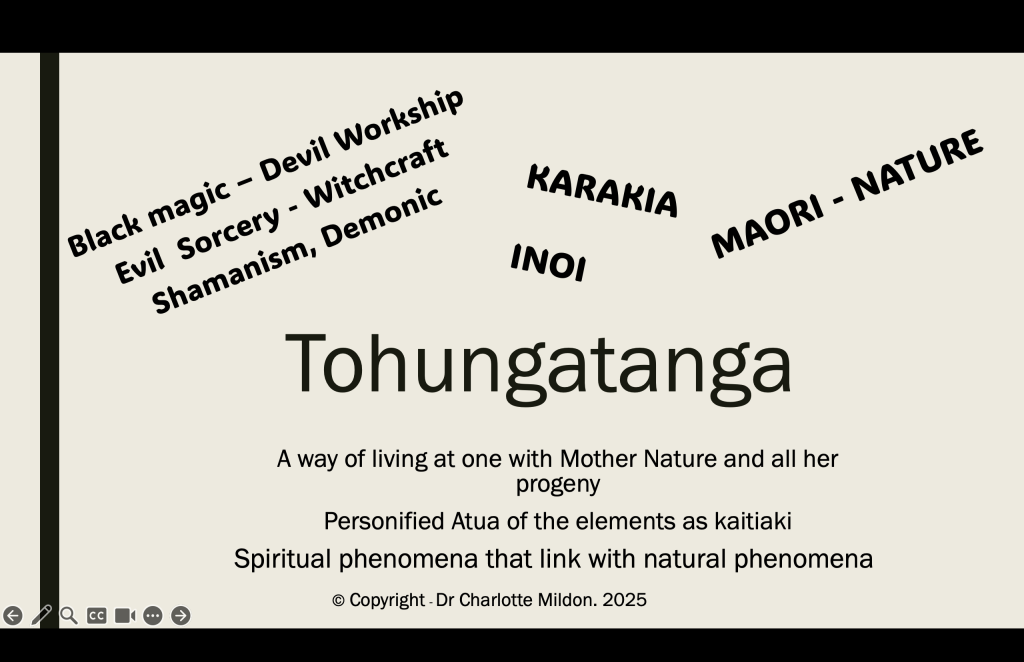
In Tohungatanga, one of the most important philosophies of Māori spirituality was the synchronicity of the male and female Atua otherwise known by Papa De La Mere as the Apa whom he identified as being the bearers of a deep form of unconditional love. As passed down through the lines of Tohunga, the ultimate female Atua, Rikoriko, has always exsited in our oral literature only found in the old karakia, tauparapara, whaikorero, moteatea, waiata and whakapapa yet her existence is relatively unknown in contemporary Māori society. Only the Tohunga and the Tohuna were aware of the potential healing powers in balancing of the male and the female in the natural spiritual healing realms.
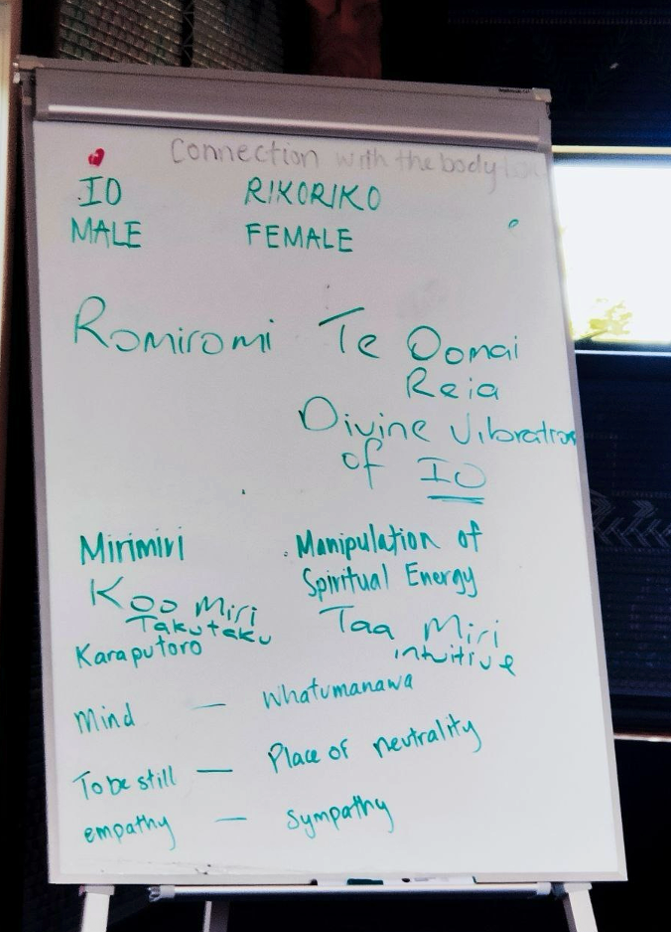
The whakapapa of both the female and male Atua are also include the synchronicity in the whakapapa of romiromi. This kind of mātauranga is not available on google and has been kept under the radar shared only with those enlightened beings. The purakau passed down the lines of Tohunga shares how Tangaroa was the first partner of Papatūānuku where she once was the floor of the ocean. Once she was separated from Tangaroa she let out the first karanga as the land come up to the surface. Only then did she see Ranginui who became her next partner. From that point onwards, Tangaroa and Hinemoananui became partners.

The Tohunga could see what you would do with the knowledge and would not share with someone they could see would not be able to hold the knowledge nor teach it to future generations. Moumou wa for them and so many Tohunga would take their knowledge to their graves as they were not able to find someone who was worthy of ‘learning and teaching’ this calibre of mātauranga. So if you were not doing your own healing, the Tohunga knew that the energy going into your mahi would harm instead of heal.

The puumanawa is the third heart where your gut feelings works with the body to warn you and this manifests in goose bumps of the hair standing on end on your arms or neck and/or a sore puku. The puumanawa is situated at the base of the stomach area and is in the same region as the puku-riri where we can hold old experiences like resentment, hatred, jealousy, anger and rage. No doubt the puku riri and the puumanawa are connected with the manawa and the whatumanawa orchestrating magnificent spiritual healing releases when synchronised. When people become unwell spiritually however, the balance of the 3 hearts will be in question as whaiora are often unable to navigate their way out, being completely unaware of the effects of the spiritual imbalances of the hearts.
Moana: Heart Disease Statistics
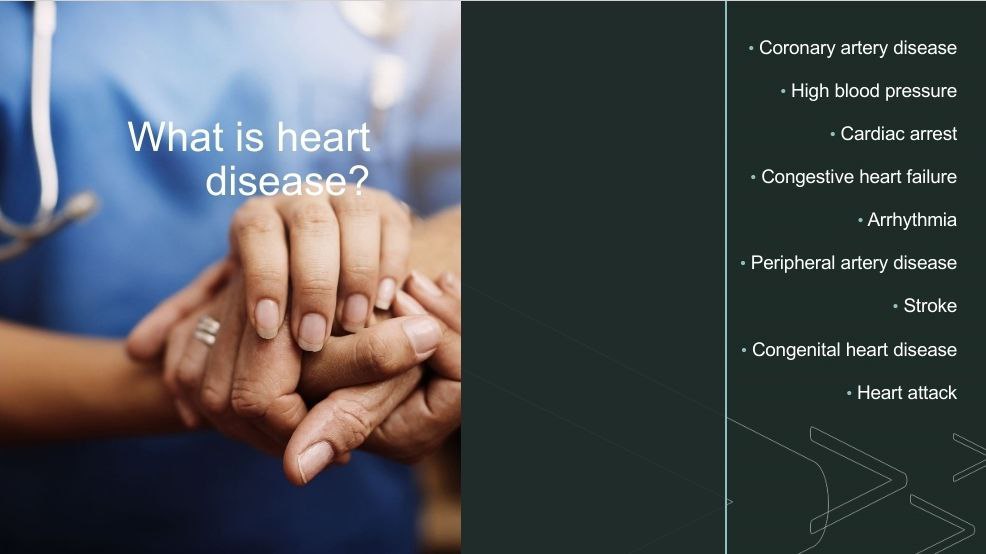
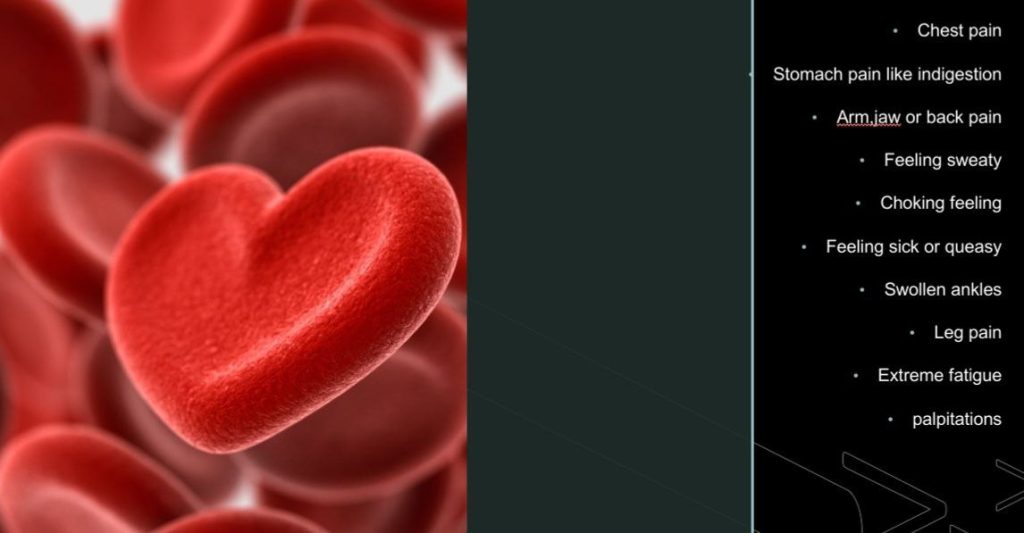
Some of the symptoms of Heart Disease

Heart disease statistics in NZ
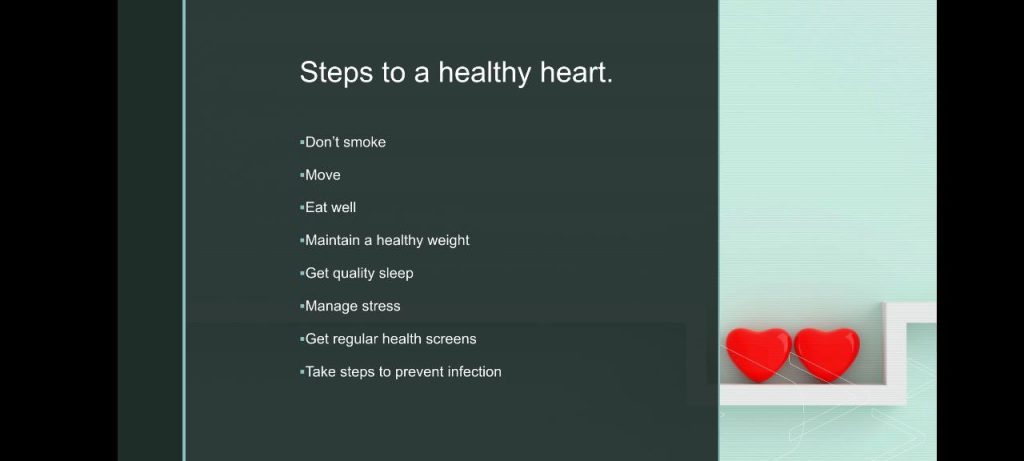
Charlotte’s Additional Notes for Rongoā
1. Limit alcohol intake.
2. Check mgs of sodium on the back of sauces, cans of fish and everything else you eat as this can raise your blood pressure.
3. Take Omega 3 supplements or eat fish like salmon, mackerel and sardines as the fish oil is very good for healing heart disease. Salmon frames are an inexpensive way of eating fish. Easy to steam with a little water in the pot then tip into another container as a stock for a seafood chowder. Put the fish in the fridge then bone when cold as it is easier to bone when cold. Check the sodium content on cans of fish, sauces, and any processed foods for example, the sodium content in Anchovies in olive oil reads about 1500mgs per little bottle which will raise your blood pressure.
4. Beetroot is very good for the heart so add it to salads. Juice with beetroot, carrot, apple, fresh ginger and tumeric (ready juiced Tumeric that can be bought from Countdown in the vegetable section. Remember to add black pepper to keep the tumeric in the body. Cayenne pepper is really good for the heart too so I add this to my raw vegetable juice. Celery is really good juiced for the liver if the taste is pallatable for you.
5. No iodised salt as the sodium raises the blood pressure of the heart. Instead, buy some Celtic salt as it is really good for the heart as well as the body that needs the natural minerals.
6. If your blood pressure is high then take a warm to cold epsom salts bath as the body is often lacking in magnesium.
7. No rice or potatoes as there are 22 cubes of sugar in one cup of rice or potatoes.
8. When you body goes stone cold, your blood pressure has gone low and this can be dangerous as well. Google Tai Chi moves to raise the blood pressure as this works well but hot water and cayenne pepper and spicy foods are helpful but watch the sodium salt levels.
9. Clean the body of parasites using flax root wairakau and health supplements. When you are ready, ask to join the Detoxing Telegram page that we have as a whānau, we supporting one another as in the whakatauki ‘Nau te rourou, nāku te rourou, ka ora ai te whānau’. This translates to ‘With your kete and my kete, the family will thrive’
Kauri Calvert: Rongoā Whakapapa
We were very fortunate to have Kauri share the whakapapa of the Harakeke flax bush from Kauri. Whakapapa being an essential part of Rongoā.
To the best of my knowledge:
Harakeke is the child between Tāne-nui-a-rangi and Hine rau a moa, or in Maniapoto tradition, is a child of Hine Pākoti.
Tāne fell in love with Hine rau a moa (in which I was told she is a child of Tangotango/Rehua and or Wainui), Hine rau a moa was a star, a member of Te Whānau Marama. This romance took place when tāne set to make a cloak for his father made out of stars, he placed them into the heavens to adorn his father just as he had done to his mother Papatūānuku to Keep her warm and covered with the trees of Tāne hokohoko.
Hine rau a moa was said to have been the petitest/prettiest star in the sky and had beautiful small soft hands, perfect for fine needle work.
Now between Hine rau a moa and Tāne they had 3 children
One was Hine te iwa iwa and the other Harakeke-(Phormium tenax) and Whārikiriki-(Phormium cookianum).
Hine te iwa iwa took after her mother and became an atua of weaving fertility family and child birth, she is also to my knowledge the oldest
While Harakeke and whārikiriki also known as (Kōrari) up north took after their father Tāne.
Harakeke had traits of their kui Wainui so left for the swamps and grandmother.
“Also harakeke gets its name from the sound that harakeke makes when the wind blows through them with their stalks blowing in the wind, try it some time and listen and you’ll hear
Hara ke ke…. Hara ke ke…..”
While Whārikiriki was half like her father half like her mother so she left for the forest on top of the mountains to be close to her siblings in the ngahere and halfway to her mother Hine rau a moa and Te Whānau Marama…
Harakeke Root Wairakau by Miri Cracknell
Harvesting flax root

Kia Ora Whānau
When: I harvested the flax root after the rain because the soil was softened. Harakeke should not be harvested during the rain, in the dark or if you have your Ikura or are hapu.
How: Karakia and ask permission to harvest. I harvested an outer section of the flax bush that was easily accessible and looked less connected to the main plant.
I used gloves and kind of climbed under to loosen the potion I had chosen. I had a small spade to help loosen the flax from the ground. I mostly used my hands to wiggle and separate it out whilst trying not to impact the rest of the plant.
Where: I have flax at home, so I know the general history of the soil and am not in an area that was flooded. I suggest being mindful of knowing the soil history and whakapapa of the area as I wouldn’t want to gather from Tapu places or if the flax is for certain purposes etc relevant permission should be sought before harvesting.
Return any unused foliage and the used root to Papatuanuku: Karakia and give thanks for the Rongoā.
Flax Root Wairakau
What you need:
• Slow cooker or large pot you can put in the oven
• Freezer space for bottles of Wairakau (I had enough freezer space to store water bottles but if you don’t have space, it might be easier to store the root and reuse as you go)
• Estimate the dosage you plan on using and how much Wairakau you need based on how many cycles you are going to do. I planned on trying 3 cycles of 10 days on 5 days off. The 10 days on 5 days’ rest is to match the parasite life cycle. The eggs are hatching during the rest phase.
• I planned for approx. 1 cup a day which would require approx. 30 cups of Wairakau.
• I used 5 x 1.5ltr bottles of water
• 1 x cleaned Flax root (using a potato scrubber)
Method:
• Karakia
• I have a small cooker, so I had to repeat the process using the same root.
• Place root in pot, cover with water. (I preheated the water to reduce the time taken to bring to a simmer)
• Bring to a simmer and simmer for 15 mins then reduce the heat to low for about 4- 6 hours.
(If you are using an oven, bring to a simmer on stove top thenplace in oven with lid on low for about 4-6 hours. Check water levels regularly and top up if required)
• Once Wairakau is cool fill bottles I kept one in the fridge and the rest in the freezer.
Dosage:
• I suggest trying a small amount like a shot glass before starting your cleanse to see how your body responds. Roots might be slightly different in shape, size and concentration and we are different so what works for me may be slightly different for other people.
• After the trial I started with half a cup for a couple of days then increased to approx. just under a whole cup (I use a standard coffee cup so I can’t give you the exact amount). I chose this dosage because 10-day windows are a longtime to have increased elimination and I didn’t want to overdo it.
Not sure if this is relevant but I also used activated charcoal as a binder to help clear out toxins released by parasites when they die etc. I also incorporated Horopito in my diet to assist with the cleanse.
Moana: Rongoā for the Heart
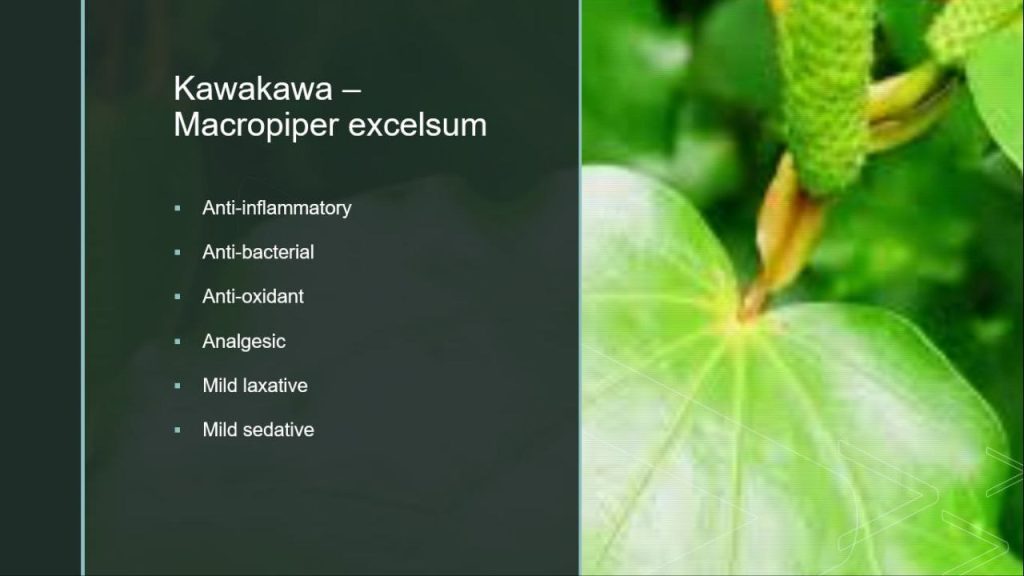

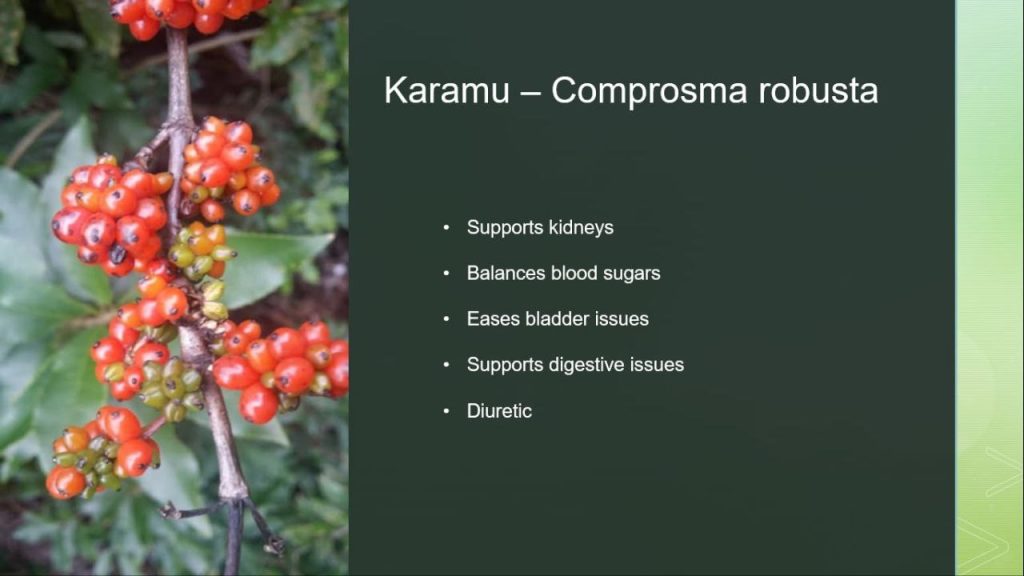

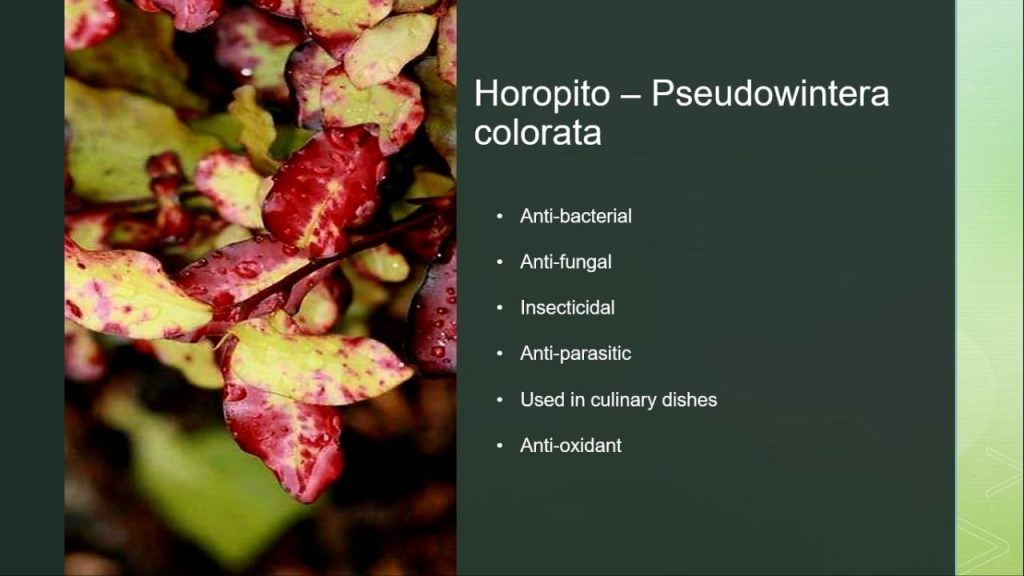

Feedback from Moana’s presentations
Although I am not new to rongoā I feel like a newbie in this space & I embrace the learning wholeheartedly.
I did enjoy how we split into groups which also aided in getting to know each other again, and talked about not only the physical and Latin/botanical names the terrain where the plant lives and science behind it all etc… but also about using your own intuition and using your body to tell you what the rongoā does/ might be good for.
I particularly appreciated those who observed the rongoa, and asked questions or shared what was coming up for them. One asked about the leaves of Karamu growing in pairs and how it balances the blood sugars. Their question was…do you think, the fact they grow in pairs is related to balancing, like the hips? We looked into it further and found most of the plants that brought things into balance had leaves that grew in pairs. I found that very intriguing.
I particularly enjoyed the presentations of findings from each roopu.
I learned so much from this I never knew how powerful our rongoā is for us. I thought Moana facilitated in a way we could all understand and I found it easy to follow and learn.
Missed some of it but very interesting. Know alot of it but learnt new info as well which was very interesting.
Well done Moana, easy to follow and understandable and having research into rongoa and how this cleans us and the effects of unhealthy dieting
Moana is stunning with her knowledge of Rongoā and ways of using it to heal the body, organs, digestive system.
I love how Moana connects us to papatuanuku and the ngahere it brings warmth to my body.
What I did learn was very beneficial for my family and myself, especially the awareness of heart related things, as we have a long line of history in our family with blood pressure and heart issues.
Moana’s approach is very gentle and encourages us to research and find out more. I loved learning about rongoaa that can support us in our detoxing.
The simplicity of how everything was conducted with the kaimahi, kuia that awhi the kaupapa and the 2 facilitators who hold the matauranga was at a high calibre.
Moana was an engaging facilitator, sharing her knowledge with warmth and clarity. Participants shared some of their own experiences with using rongoa successfully which added depth to the learning.
Her presentation is so humble yet vast in knowledge. I love how she gets whanau to research and present back on their findings. So much intrigue and excitement was coming out. A big shout out for the hula sessions that was so much fun!
I found the Rongoa content very resourceful. I enjoyed the hula dancing in between workshops to clear our head from alot of info and grounding ourselves from being one with Papatuanuku.
Moana’s mātauranga and lived experience created a rich space for learning — I appreciated the way she shared openly, while allowing space for me to reflect on my own understandings and interpretations. There were definitely a-ha moments as my prior knowledge evolved.
Charlotte: Romiromi for the Heart



The kidneys communicate with us as well and work very closely with the hearts. When this area of the body goes cold, this is the kidney exhibiting fear. When we have urine infections, this is the kidney exhibiting that we are pissed off about something. According to papa De La Mere, the wairua sits in this area of the body. Wai – water Rua – two.
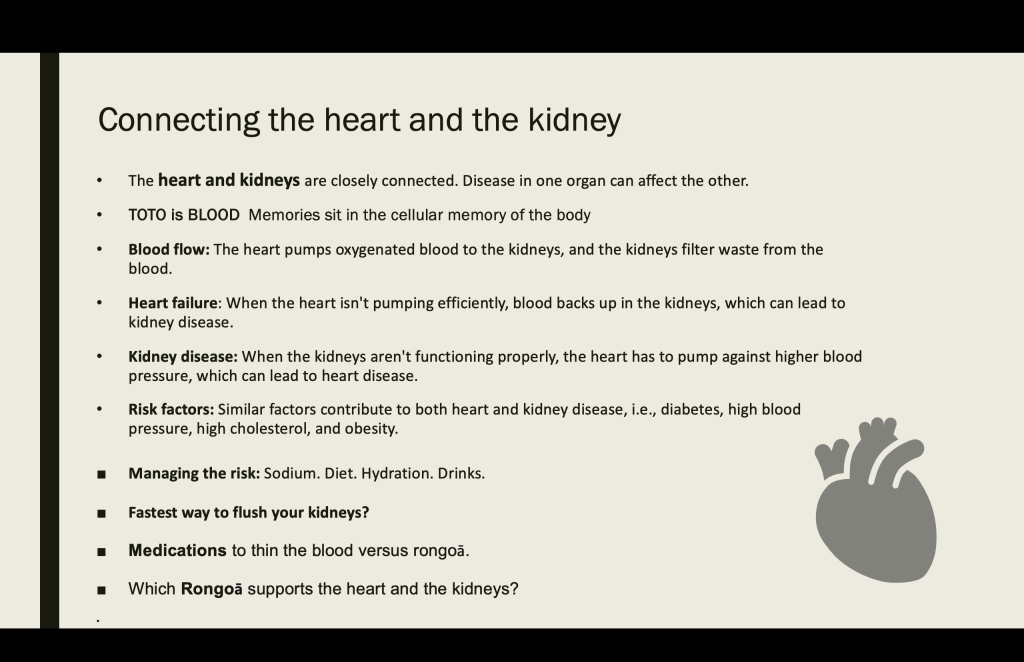
Seeing that heart disease is the biggest killer in NZ with wāhine Māori being the highest statistics for dying of heart disease. Study these symptoms so you can become more aware. After the Rongoā symposium my blood pressure went through the roof so I had to start juicing with beetroot, carrot, apples and fresh ginger with liquid tumeric (from Countdown) and black pepper that holds the tumeric in the body.
Cayenne pepper supports the circulatory system and help control blood flow easing symptoms of Raynaud disease helping blood flow, therefore strengthening the heart, arteries, capillaries, and nerves. It acts as a tonic to strengthen the heart, arteries, capillaries, and nerves. Juicing has long been known to heal chronic diseases providing you are also drinking water and ensuring your diet is relatively sugar free, gluten free, and dairy free to make the body alkaline as disease will not survive in an alkaline body.




Disease will thrive in an acidic body.
Heart disease can damage the kidneys so knowing the symptoms of kidney failure are vital.
Disease cannot survive in an alkaline body.

Karamu wairakau is very good for the kidneys making them alkaline
Kawakawa wairakau heals the liver, which in turn supports the kidneys
As mentioned in the wānanga, drinking 3-5 litres of water each day (an hour before or after eating), changing the diet to no red meat, low carb, no sugar, no gluten, no iodine salt, and no dairy, with seeds and nuts, coconut and olive oils (only not other seed oils that can cause cancer) to stop the body from being acidic. This change in diet makes the body alkaline and heals the body naturally.
Free radicals attack healthy cells

Eating plenty of fruits and raw vegetables have antioxidants and flavonoids.


Antioxidants
Flavanoids and antioxidants neutralise free radicals easing oxidative stress that in turn supports the heart to function without any strain.

Feedback of Rongoā and Romiromi content by Charlotte
I especially enjoyed learning about the different parts of the body & what they each represent for us as beings in this realm. I really enjoy your teaching style and the way you are calm, sharp & precise in your delivery of words & how you share your valuable lived experiences.
This was a safe, non-judgmental space for me to reflect before, during & after each session.
I love how Charlotte offers alternatives to the expensive supplements. She investigates what is needed in the body, what supplements or medication is usually offered, what they do to the tinana, and then looks for alternatives in the rongoa rakau. Most don’t have long term side effects.
Charlotte – always brings the good stuff!! The ancient knowledge and wisdom around the atua giving us the balance of wahine and tane atua and putting it all into perspective of how important the females are in a maori world view, being able to decolonize my mind is healing in itself. This knowledge is fascinating and life changing.
Facilitation was amazing I found it easy to keep engaged the whole time, the content by charlotte is what I have been looking for so humbled how to look after myself.
Learnt a lot and gives whanau choices which I highly believe in. All to your own. Choices are great.
NGA Mihi Charlotte your energy was high and so easy to follow, your knowledge and understanding of supplements is so valuable, not everyone is a one rongoa fix and the traditions of this tohu is going to be around for many more years thanks to your dedication to pass this Tohu to those who are intuitively aware of this.
I would love to learn more about appropriate rongoa for the body.
Since the last wananga I have been on a healthier journey (gluten, sugar & dairy free) and moments of 80/20. I also have shared my learning so far with family and friends who are having serious health problems, sharing how I have started seeing kai as rongoaa and being more mindful of how to look after myself.
I left wananga feeling inspired and motivated to be more mindful of the relationship I have between food and how that impacts on my tinana, Wairua, and hinengaro.
As a result of your session, I’m saving towards a decent juicer that will make the heart juice – beets, carrots, ginger and turmeric.
I heard of Io but never called to him because I thought it was just the word God in Māori – colonised and patriarchal. For me, this is the return of Rikoriko. The divine feminine, unconditional love.
I have been on the detox journey so love hearing about the parts of the body that supplements work with.
Really really grateful for the opportunity to learn about the ways of our tupuna, their gifts, their wisdom, and to learn with no monetary charge is also powerful. It gives the mahi and learning a different fee.
Experienced life korero held the power of the teachings given. I have been shifting my mindset and of my whanau to look at a better way of healthier eating.
Charlotte’s facilitation was welcoming, supportive and warming. Learning Taa Miri and Koo Miri was insightful, Tapping into our whatumanawa and Charlottes knowledge of interpretation was impressive and encouraging to want to learn more about this aspect.
Aunty Charlotte did a fabulous job of this Kaupapa. Sharing her lived experiences is priceless. I was in awe at some korero, laughing at other korero shared, some reminded me that I need to get myself right back on board.
To me, It doesn’t matter what or how Charlotte delivers, knowing her, you know you’re not gona get this level of maatauranga anywhere else and to make it the norm in our households, yes it’s happening.
I found the Romiromi by Charlotte very engaging and well explained eg, whatumanawa,takutaku, left side wahine me right side tane?, Heart and Kidney and roopu participation reading the body.
One thing that has stayed with me is the ongoing kōrero around kai and colonisation. It now lives in the front of my awareness — I see its impact constantly in our communities, workplaces, and kura.
Sometimes her words make you want to step aside or take a breath, but that’s part of the invitation: move out of your own way. That simple phrase carries so much depth.
Hula with Moana
In our Romiromi wānanga, the hula with Moana shifts and changes the energy especially after being in the tapu of whaiora during intuitive diagnosis. It can be heavy being in historical trauma held in the cellular memory of the body. When I travelled with the Māori healers for 12 years, we would often laugh out loud as we were deep in the taputanga of the whaiora most days working with heavy trauma and spiritual entities every day. It might have seemed inappropriate to the whaiora from other cultures to see us laughing like this but it is who we are as tangata whenua where we laugh from the belly and in essence it lightens the heaviness. Similarly, this is what dancing does to bring you back from the spiritual realms and back into the physical.
On these wānanga, we do the hula because its fun and nearly everybody can do it, at any age, even if they are in a walker as you can in the movie below. Laughter and dancing is good for the soul to ground, restore and rejuvenate the body, mind, spirit and whānau. When we do this, the trees and all the progeny of Papatūānuku dance with us too because this energy makes them happy too. Same as when we go to the ocean, we connect with the whānau of the sea. The universe conspires with us not against us.
Feedback of Hula with Moana
The hula and walking on our bums felt really good on my hips and lower back.
One of the biggest things that struck me during your presentation was making sure we move our bodies.
This resonated loudly for me so I’ve implemented more movement eg take dogs for more walks even if it’s raining and cold.
A big shout out for the hula sessions that was so much fun!
I enjoyed the hula dancing in between workshops to clear our head from alot of info and grounding ourselves from being one with Papatūānuku.
Butt Walking for loosening the Hips and Building Stamina
This movement was shown to me by Ngāti Kuri Tohunga Romiromi Atarangi Muru from up north in Ahipara. It was a move that her Aunties showed her when she was young as this was their way of loosening up your lower back and your hips. Getting up and down off the table or mattresses working people can place a strain on your body. Working all day, every day, for weeks on end, performing romiromi overseas with the Māori healers was hard work. Often the tauira were expected to do butt walking not just on the floor inside but outside too. We had to go up hills and then come down again each day during wānanga not just in NZ but in countries all over the world. Although its hard, it gets the whole body moving and loosens it up.
I used to live in a house with a long hallway so I would do this in between workshops overseas to loosen my hips up and it makes you fit and strong. When we did the butt walking in Ahipara, up north by the beach, we had to butt walk up a hill. Man was that hard work then we had to bum shuffle down. We also did this in France and Europe as their country side was very similar to ours. We never did butt walking in countries that had snakes though.
Purepure at the Pourerere Beach
The purepure is a sacred ritual that is used by our Tohunga. My first experience of invoking the spiritual phenomena of nature was at my first wānanga with Papa De La Mere in Whitianga in 2003. He conducted a purepure ritual in the sea that illustrated the precise structure of karakia as described by Dr Shirres, except that Papa defined takutaku as a traditional spiritual cleansing ritual of Te Oomai Reia romiromi. The first stage of the purepure ritual in the sea began with the arranging of the children in the middle of a circle of wāhine (women), surrounded by tane (men) who were in a wider outer circle around them in the water. I was in awe of the universal healing that took place in the sea with Hinemoananui, Tangaroa and their whānau. later asked to participate in the purepure with the late Tohunga Ahurewa, Manu Korewha. It requires a repetoire of takutaku as well as a certain calibre of romiromi experience. I was priveleged to be able to a part of many purepure overseas with Manu Korewha while working with the Māori healers not only nationally but in many countries around the world.

Here is a diagram of the layout that has been used for generations with the pou on the land, the pou in the sea around the whānau, the women in a circle surrounded by the men and the children in the middle. Similar to the flax bush where the baby is in the middle surrounded by the parents and the grandparents to keep them safe.

Having done a number of purepure over the last two years with our Te Oomai Reia whānau, it was beautiful to see some of our tamariki and rangatahi taking the courage to participate this time. Although it seems cold, it is exhiliarating to not only make the body alklaine with the sea water but to experience the magical energies of our Atua cleansing and clearing old mauiui and mamae.
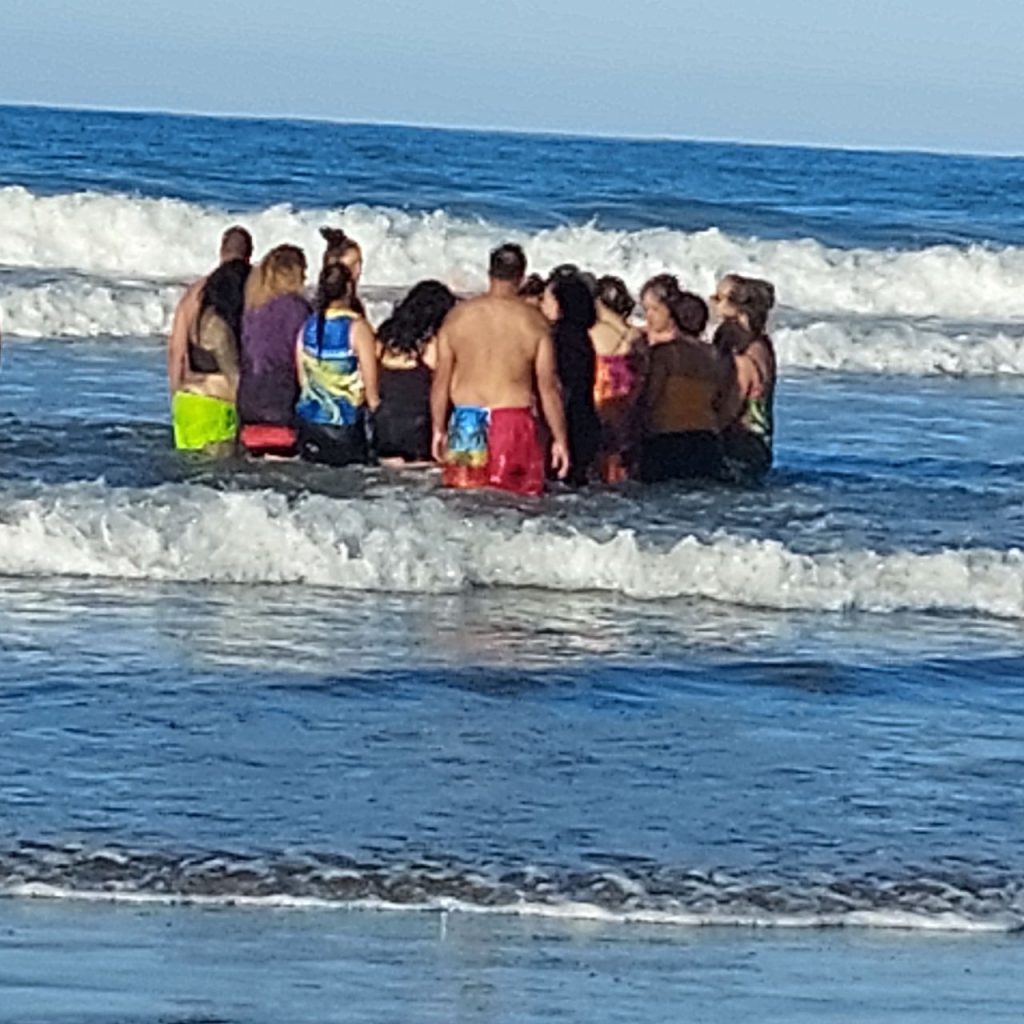
Feedback of the Purepure
Learning about the whatumanawa before the ‘pure’ because it helped me to stay with the kaupapa & out of mind so I couldn’t feel the warm temperature of the water.
Surrendering to Hinemoananui & Tangaroa is a beautiful thing, I won’t lie it’s cold it’s scary but it’s refreshing cleansing and funny all at the same time, I felt waaaay lighter afterwards like a big rock was lifted off of me.
The pure was just what many of us needed, like a sharp cold slap to wake up the system. I felt it clear allot of mamae, heaviness ā wairua, and the swim just made me want to laugh with joy, I love getting in the water no matter how cold because I know it helps to release the ngangara (spiritual parasites).
These are always a highlight. I was able to let go of stuff I was carrying and it felt good to be in the water and releasing stored trauma I have carried for decades.
Pure pure was a beautiful power experience for me especially for me living away from home for so long to be able to experience this at home was very moving and powerful I felt the connection of everything and everyone. I would change nothing about this, so beautiful.
A very nice calm release for mind body and soul, it’s always refreshing to get this done, this purepure was more valuable to have you Charlotte to carry out the takutaku and feeling the shimmering light airy tinge around us all felt very significant it releasing energy that he’d been stagnant and need to be free from me. I am still carrying the Waitai and slowly feeling leave my body.
Highlight for me was the Purepure, coming together in the sea, that was so out of my comfort level. BUT, I did not want to get out.
Lots was going on for me…It was my first time doing something like this and found it to be an intimate, supportive and heartwarming experience.
The gentle but strong chant of the Takutaku swims around and through you like it’s cleansing the waters inside and out.
The purepure as a ritual itself is something so special, it reminds me of the depth and wisdom of our culture and our connection with Hinemoana and Tangaroa and the natural world as our great healers.
The pure was explained brilliantly and carried out perfectly.
The purepure at the beach was a deeply awakening experience also tranquil and grounding. After the session, I felt calmer and more centered, with a renewed sense of peace, purpose and clarity.
Once Aunty started I felt wave after wave and with each wave it was like Tangaroa and Hine moana was washing all the heaviness off me.
I was a pou on land so didnt get into the water as I was feeling not strong enough to stand with the whaanau, but again enjoyed observing from the shore.
I found the purepure sacred and healing. Being one of the pou on te whenua was the first for me but having an understanding of why the four pou were there to keep the sacredness and protection for all in and during the purepure. I also felt a sense of calmness when I was in synchronisation alongside Kui Raewyn
I’m incredibly grateful to Charlotte and all of our pou who held that space with such presence and intention, allowing us to be part of something sacred and transformative.

Feedback of Wānanga content shared
From Friday to Saturday morning I think was meant to be all the theoretical/paperwork side of learning as I recall it And also our homework which was hard considering we were trying to use activated whatumanawa to translate a very ancient takutaku written in the old way.
Looking into issues of the heart and rongoa to support the different systems in the body was eye opening. I also enjoyed the waiata.
Charlotte, without you, many of us would still be caught up in cycles that keep us oppressed, depressed or in the dark and sick. This weekend is evidence that your wisdom is the reason many people are alive and free.
There was most definitely a lot of content. Takutaku – safety and protection. Heart and kidneys function and caring for the problems that can arise. Rongoa to support heart, kidneys and blood. Managing Blood pressure How to read the body – and what the signs of imbalance are and what it means. Mauri and how to release it. And much, much more.
Each day the content was amazing there was so much I wanted to take in, the takutatu safety, how to look after ourselves, the information on heart disease was so knowledgeable and on level I could understand.
Learnt a lot and gives whanau choices which I highly believe in. All to your own. Choices are great.
Reviewing each days content shows me how I can further identify changes within myself and how it’s important to keep a healthy mind, healthy body and healthy spirit and understanding the many Atua who surround us each day also. Waiata when we can/learn is always great value.
As a practitoner who works mainly with western ideology, it is great to have holistic tools to offer to patients as an alternative- or even as the first option if appropriate!
The format had a really good flow. And the content was rich with shared lived experience, knowledge and practical exercises. Stimulating for all the senses.
I feel like the content that I experienced was on point and very relevant to me at the time.
The review was always with great knowledge and the dance breaks were especially important. This was a weekend of pure reflection of self.
Each day’s content review helped reinforce what we had learned and clarified any questions. The summaries were helpful in consolidating knowledge and preparing us for the next day’s activities.
Each day when we had korero I was just amazed by people responses. I observed from day one to last day the joy and aroha people were sharing from their experience.
The content shared was resourceful and insightful because it had me wanting to know more and what I have learned at the wananga and take away to implement and use for my own wellbeing and whanau health healing.
I was able to release what I’d been holding, and this was only possible because of the sacred and safe space that Charlotte created through her teachings and takutaku. That space made it safe enough for what was hidden to surface.
I feel deeply grateful that this wānanga was held. I see and acknowledge the immense mātauranga and inner knowing my tuakana carries and the aroha she brings to her teaching.
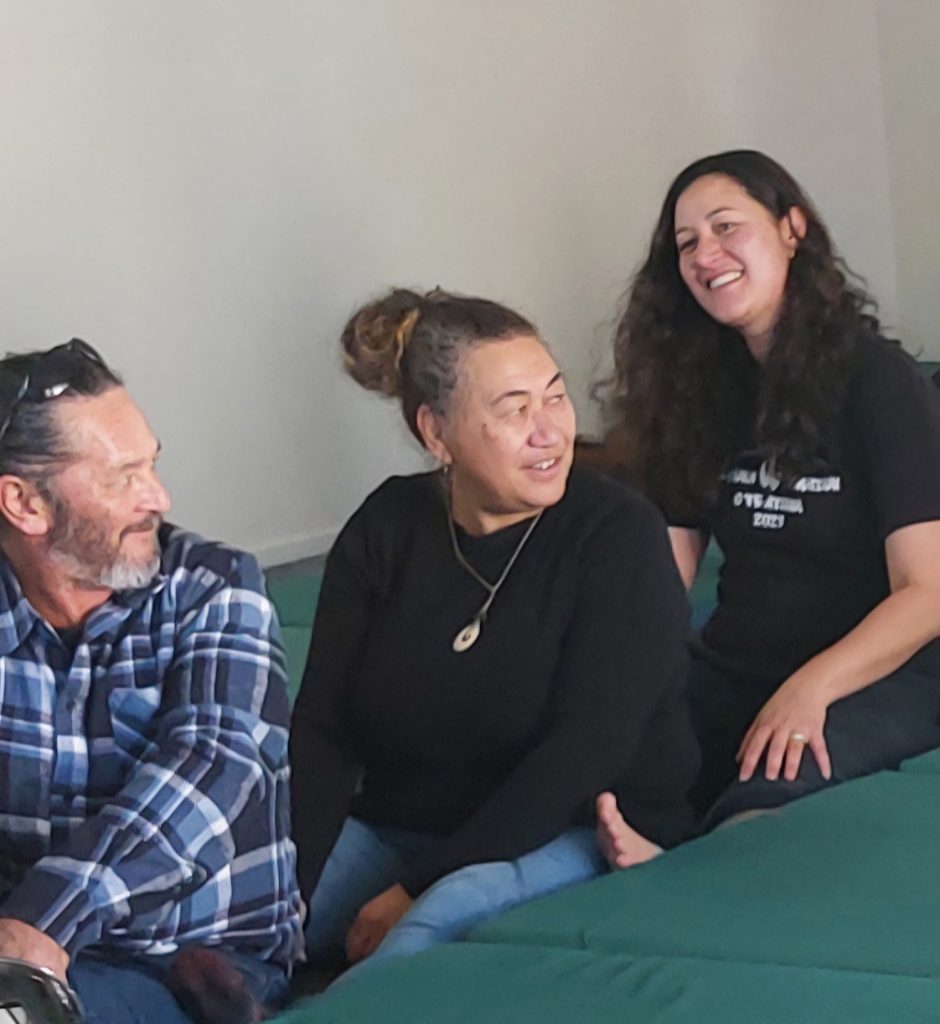
Feedback of Working the Whānau on Sunday
Was powerful, lots of mamae was released on Sunday, to see your smiles much brighter after your Romiromi and grounding, and seeing everyone’s bones was truly a wonderful sense of unity during that time of sensitivity touching and releasing all as one. I know that our space is full of feminine energy and I think that’s why there are so few men in our roopu, it’s hard being a man who’s indoctrinated in to a certain way of thinking only to be met with whaea Rikoriko, I’m just glad I’m so young to have had the opportunity to adopt the mauri of IO and Rikoriko together.
The healing is on point and we are all connected in the healing taking place as well as protected.
The Sunday working on the whanau was so powerful to be apart for these whānau that were on the table fearless to be vulnerable around us was inspiring.
Great time to do more practical activities to learn and grow.
I did struggle here, but I think this will take practice on my part.
I always feel like I kinda come to life when we are doing bodywork, and I feel a deep sense of peace when I’m around Romiromi.
I am very grateful we attended on Sunday to get the information via review for Chaye’s health and it also reinforces that I’m doing the right things for my health now and for the future.
Hearing what others were saying around me made sense. I love the communal working, it’s just so powerful having so many people in tune to each other and is always a uplifting and loving experience.
It is a privilege to be in space and do the mahi and be with ngā tupuna. I found that my intuition was heightened as I tuned in and I could strongly pick up the feelings. The deep healing that takes place on the tepu is phenomenal, you can see how deep and powerful it is.
Once again reflection into my own wellbeing so I can teach my whanau my tamariki my mokopuna. Nothing like a good reminder to get out of my own way thank u again tupuna ma.
The collaborative effort during the activities fostered strong connections, and I appreciated the openness and support from everyone involved.
So proud of our whanau going around and giving their whakaaro in roopu on each person getting worked on. So much more healing was done.
Its so good and healing when this happens, I love being in this healing energy even if you don’t get worked on the energy is all around us.
Charlotte’s matauranga and guidance and our participation observing and tuning into our whatumanawa, takutaku process it became a powerhouse where our energies together lifted up the healing process over the whaiora and relief for the whanau working on the whaiora.
Sunday’s activities were not only well-timed, but also incredibly eye-opening. They really highlighted how the practical application of our mātauranga can shift and invigorate the healing process.
It brought together the depth of responsibility and potential that comes with being a romiromi practitioner – when working from a place of whakapono and strong ethical foundations, the ripple effect on a person’s hauora can be immense. As we know, working with one person can influence seven generations – or at the very least, their tamariki and mokopuna, if not already present.

Feedback of Mahi Tahi
Setting up in different spaces I felt was easy when everyone was helping it just happened fast and easy.
Was hard and fast the clean up this time having groups and being organized this way.
Good work everyone, I can say it was the best mahi tahi wānanga to date!!
Well thought of as it makes everyone mingle and gets the mahi done with more flow, ka pai tātou.
Clean up was done well. Good team work.
Everything seemed to connect well. The spaces were set up well for what we used them for.
Everyone worked like a well oiled machine.
The workspaces were arranged thoughtfully, encouraging interaction and focus. The team worked efficiently in setting up and clean-up, which helped maintain a positive atmosphere throughout the event.
Setting up the different work spaces I thought was easy with many hands. Everyone willingly lending awhi. Clean up was quite fast again with everyone helping.
The different work spaces was achievable and well planned out . A great effort from all and whanaunga me kotahitanga.
The flow of setting up and packing down felt seamless, with everyone stepping in where needed. The marae was well-equipped and supported the kaupapa beautifully — offering us a space for kōrero wānanga, a kai area, a warm sleeping area, and even an additional room where romiromi and diagnostic mahi could take place.

Improve future Wānanga
There is nothing I could think of to improve this wānanga next time. I loved it and looking forward to the next one. Thank you to everyone.
Wananga ran very well, Maybe a karakia and poroporoaki at the last Kai before we all leave.
I would attend the next wananga to expand my knowledge. I don’t know that you could improve the wananga as it was well run by Charlotte and Moana.
I think whatever Dr Mildon and Moana have in store for us will be perfect for what we need at the time. I think I saw someone mention maybe having a karakia before anyone leaves, and I think that is a nice suggestion. But honestly, I think our wa turns out just how it is meant to.
I like the idea of sharing the workload, I’m wondering if we could have a check in each day to see who is in which group and what they are working on.
I always love more waiata so I’ll make sure I bring my partner Next time who can play guitar for you. Such a beautiful Wananga and I There was so much more I took away.. Can’t wait for the next one.
Nope cant think of anything.
I have no feedback to mention. The wananga was miharo and I can only support and look forward to the next wananga.
Maybe having name tags would be helpful so I can remember who I’m talking to — haha, that always helps me feel more connected!

He Wānanga Whakahirahira
I extend my heartfelt gratitude firstly to our facilitator Moana Skipwith-Lousi who put on a brave face to present at our wānanga even though she and her whānau had just buried her sister in Perth then came back to Aotearoa to face more whānau struggles at home. Ngā mihi maioha ki a koe Moana. Kei te aroha mātou ki a koe.
He Whakataukī: ‘Hurihia tō aroaro ki te rā me te marama, tukuna tō ātārangi kia taka ki muri i a koe
‘Turn your face to Hinenuitera and Hinemarama and surrender so your shadows will fall behind you’
Thank you to everyone who helped make our recent wānanga such a powerful and unforgettable experience for our tamaiki, rangatahi, pakeke and, kaumātua alike. Despite the last-minute venue change the night before we began, our wairua stayed strong. Some whānau arrived late or missed key updates, but the flow of the wānanga remained intact, as if guided by our ancestors of old.
Whether you were with us for an hour, a day, or the whole time, your presence was valued. The wairua of our time together was unmistakable, and we acknowledge those who offered koha of kai, putea, energy, or time so ngā mihi aroha ki a koutou katoa. You helped uphold the spirit of manaakitanga that carried us through the setting up of the marae at late notice, the powhiri, the preparing of the kai in the kitchen, the cleaning, the manaaki, the waiata, and your very presence that made our wānanga so very special.
Hei Aroha, Hei Maharatanga
We once again forgot to take a group photo! Not even at the beach after our purepure! But hei aha, the real memories live on in our hearts. Many of our Tohunga kuia would never allow their kauae moko to be photographed, for fear the camera would capture their mauri. Likewise, Tohunga like Te Awhina Riwaka refused journal or media interviews, staying true to the sacredness of their role. Their wairua still lives on today, in how we honour the important transmission of mātauranga to future generations of mokopuna and mokomoko Māori.
Evaluations from Te Oomai Reia Telegram Whānau
Some of our whānau aren’t yet on the Te Oomai Reia Telegram page, so their evaluations aren’t shown online. Also, due to space, only a few have been shared publicly. Know that all your whakaaro are received with deep appreciation.
Seeing the growth of our tuakana over the last two years has been humbling and beautiful.
Meinga meinga e te whānau!
KAUPAPA WHAKAMUA: Looking forward
✅ Funding Secured to 2027!
We’re excited to share that Te Whatu Ora has confirmed continued funding for our programme through to 2027. Our core focus remains on Romiromi and Rongoā Māori but our kaupapa will continue evolving to meet current needs in our communities that whānau are facing.
He Whakatauki: Kia whakatōmuri te haere whakamua
Walk backwards to the past, moving from the present to the future, thus being informed with the wisdom and guidance of our ancestors, who are ‘timeless in essence‘.
🌿 Preserving Our Tupapaku Naturally
With many whānau unable to afford tangihanga or the $18–$20k cost of commercial funerals, we will begin a new thread in our kaupapa:
Learning how to preserve tūpāpaku at home using kawakawa and traditional methods under the guidance of our Tohunga Rongoā.
We will also explore reviving ancestral practices such as weaving whāriki from harakeke for our tupapaku, offering an alternative to expensive coffins. This work not only honours our tūpuna, but also protects Papatūānuku by avoiding the poisoning of her with the toxic embalming chemicals that do not break down.
🔍 ACC-Accredited Training for Tuakana
Next year, select tuakana will have the opportunity to begin training to become ACC-recognised Rongoā Māori vendors. This pathway is for those who have demonstrated over the last two years:
- Attendance at all of our wānanga from this point onwards
- Long-standing integrity and discipline in their personal healing journey
- Deep understanding and embodiment of the mātauranga
- Commitment to walking with divine ego (not human ego)
- Respect for tikanga and kawa in both spiritual and practical care
Our Tohunga will continue mentoring for life providing the tauira likewise walk their talk.
What’s Next?
We’re now completing our reporting and planning for the years ahead. Please stay active on the Te Oomai Reia Romiromi Telegram page whānau as those who remain inactive may be removed. Let’s continue to tautoko mai, tautoko atu and strengthen our waka together. He waka eke noa – we are all on this canoe together.
HE WHAKATAUKĪ WHAKAMUTUNGA
He taonga rongoā te aroha ki te ao nui ō ngā Atua Māreikura
The treasure of traditional Māori healing is the universal unconditional love of the divine feminine
Mauri ora ki a tātou katoa – Te Whānau o Te Oomai Reia
Ngā mihi maioha
Nā
Dr. Charlotte Mildon
Te Kaihautu
